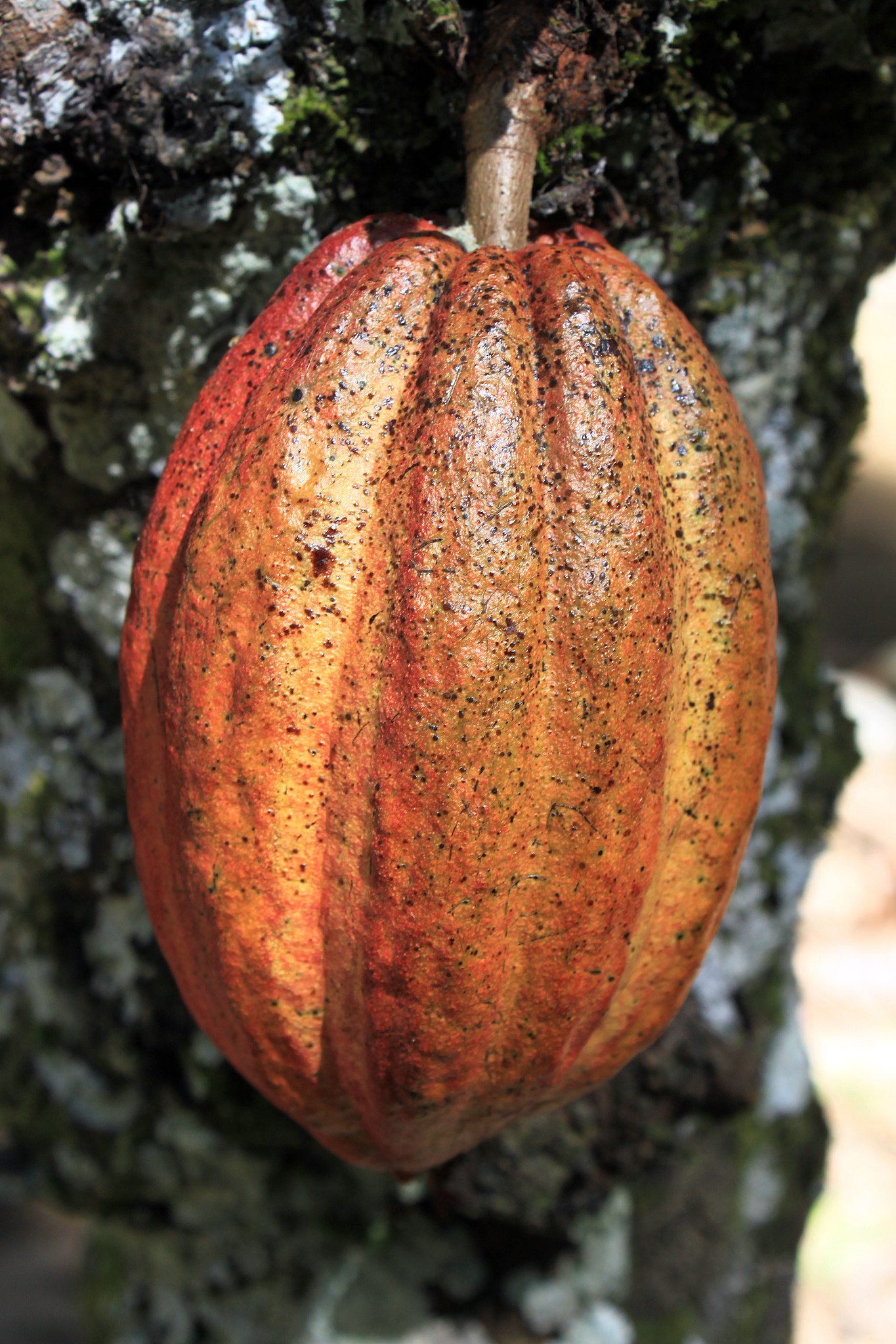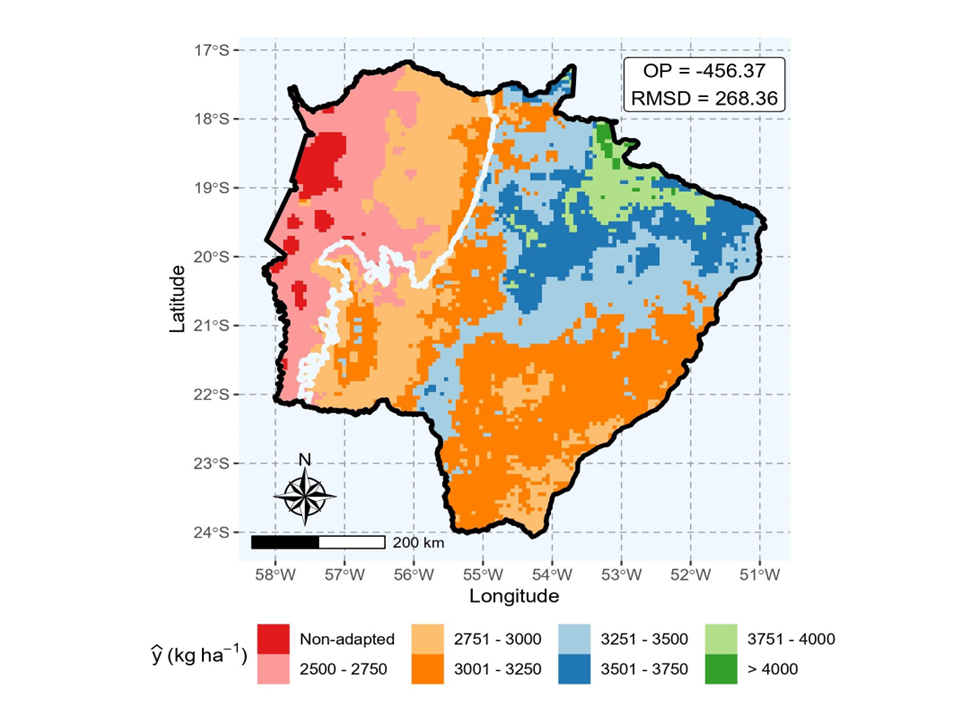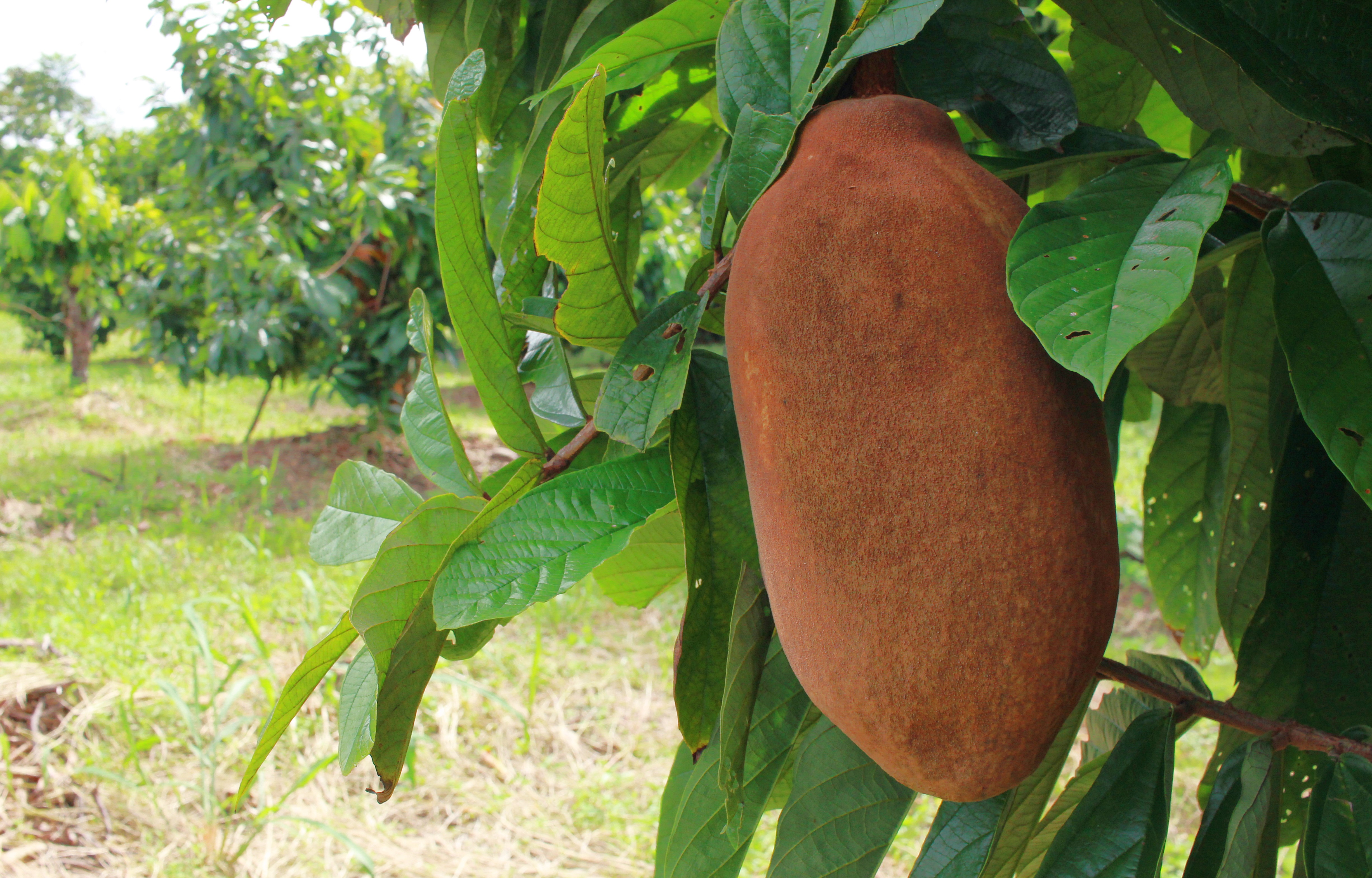Publications
Publications in reversed chronological order.
2025
-
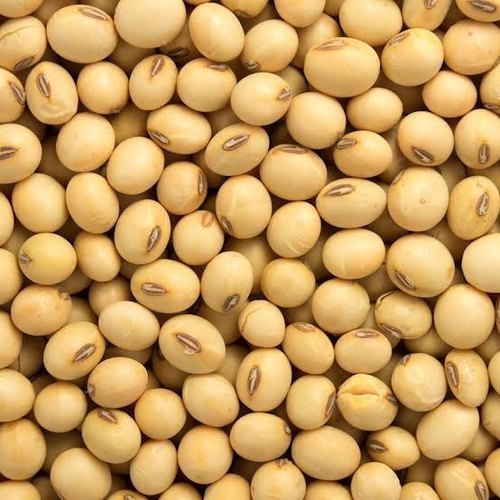 High-resolution soybean trial data supporting the expansion of agriculture in AfricaMauricio S. Araújo, Saulo Chaves, Gérson N. C. Ferreira, Godfree Chigeza, Erica P. Leles, Michelle F. Santos, Brian W. Diers, Peter Goldsmith, and José B. PinheiroScientific Data, Dec 2025
High-resolution soybean trial data supporting the expansion of agriculture in AfricaMauricio S. Araújo, Saulo Chaves, Gérson N. C. Ferreira, Godfree Chigeza, Erica P. Leles, Michelle F. Santos, Brian W. Diers, Peter Goldsmith, and José B. PinheiroScientific Data, Dec 2025@article{araujo_high-resolution_2025, title = {High-resolution soybean trial data supporting the expansion of agriculture in {Africa}}, volume = {12}, copyright = {All rights reserved}, issn = {2052-4463}, url = {https://www.nature.com/articles/s41597-025-06190-3}, doi = {10.1038/s41597-025-06190-3}, language = {en}, number = {1}, urldate = {2025-12-05}, journal = {Scientific Data}, author = {Araújo, Mauricio S. and Chaves, Saulo and Ferreira, Gérson N. C. and Chigeza, Godfree and Leles, Erica P. and Santos, Michelle F. and Diers, Brian W. and Goldsmith, Peter and Pinheiro, José B.}, month = dec, year = {2025}, pages = {1908}, dimensions = {true} } -
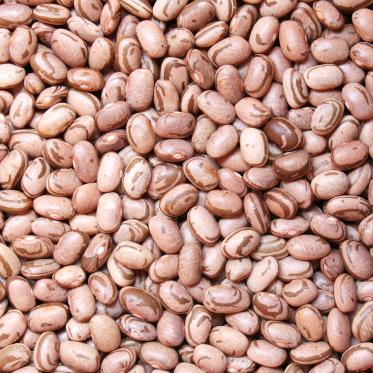 Enhancing enviromics based predictions in common bean multi-environment trialsGabriel M. Blasques, Luiz A. S. Dias, Mauricio S. Araújo, Alisson F. Chiorato, Sergio A. M. Carbonell, Lucas P. Corrêdo, Saulo Chaves, and Kaio O. G. DiasScientific Reports, Oct 2025
Enhancing enviromics based predictions in common bean multi-environment trialsGabriel M. Blasques, Luiz A. S. Dias, Mauricio S. Araújo, Alisson F. Chiorato, Sergio A. M. Carbonell, Lucas P. Corrêdo, Saulo Chaves, and Kaio O. G. DiasScientific Reports, Oct 2025@article{blasques_enhancing_2025, title = {Enhancing enviromics based predictions in common bean multi-environment trials}, volume = {15}, copyright = {All rights reserved}, issn = {2045-2322}, url = {https://www.nature.com/articles/s41598-025-21882-x}, doi = {10.1038/s41598-025-21882-x}, language = {en}, number = {1}, urldate = {2025-10-31}, journal = {Scientific Reports}, author = {Blasques, Gabriel M. and Dias, Luiz A. S. and Araújo, Mauricio S. and Chiorato, Alisson F. and Carbonell, Sergio A. M. and Corrêdo, Lucas P. and Chaves, Saulo and Dias, Kaio O. G.}, month = oct, year = {2025}, pages = {38070}, dimensions = {true} } -
 Exploring genotype-by-environment interactions in tropical soybean multi-environment trialsGuilherme R. Pereira, Mauricio S. Araújo, Saulo Chaves, Gabriel M. Blasques, Luiz A. S. Dias, Felipe L. Silva, André R. G. Bezerra, Pedro C. S. Carneiro, and Kaio Olimpio G. DiasEuphytica, Jul 2025
Exploring genotype-by-environment interactions in tropical soybean multi-environment trialsGuilherme R. Pereira, Mauricio S. Araújo, Saulo Chaves, Gabriel M. Blasques, Luiz A. S. Dias, Felipe L. Silva, André R. G. Bezerra, Pedro C. S. Carneiro, and Kaio Olimpio G. DiasEuphytica, Jul 2025@article{pereira_exploring_2025, title = {Exploring genotype-by-environment interactions in tropical soybean multi-environment trials}, volume = {221}, issn = {1573-5060}, url = {https://doi.org/10.1007/s10681-025-03576-7}, doi = {10.1007/s10681-025-03576-7}, language = {en}, number = {8}, urldate = {2025-07-14}, journal = {Euphytica}, author = {Pereira, Guilherme R. and Araújo, Mauricio S. and Chaves, Saulo and Blasques, Gabriel M. and Dias, Luiz A. S. and Silva, Felipe L. and Bezerra, André R. G. and Carneiro, Pedro C. S. and Dias, Kaio Olimpio G.}, month = jul, year = {2025}, keywords = {Environmental features, Factor analytic models, Genetic Interaction, Genotype, Multi-environment trials, Natural Variation in Plants, Plant Breeding, Plant Physiology, Quantitative trait}, pages = {124}, dimensions = {true} } -
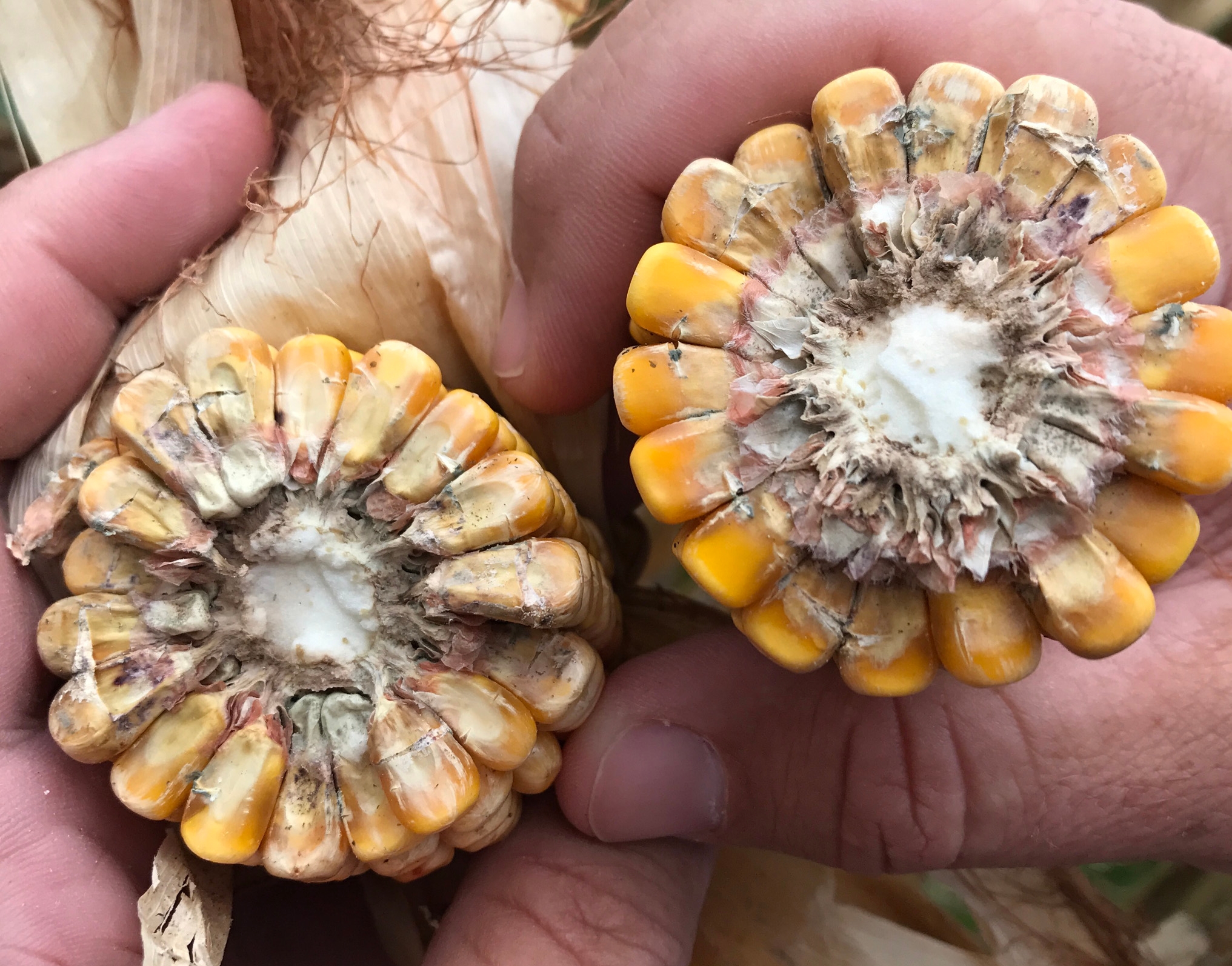 Optimizing the single-step model for predicting fumonisins resistance in maize hybrids accounting for the genotype-by-environment interactionJeniffer Santana Pinto Coelho Evangelista, Kaio Olimpo Graças Dias, Maria Marta Pastina, Saulo Chaves, Lauro José Moreira Guimarães, Jorge Hidalgo, Julian Garcia-Abadillo, Reyna Persa, Valéria Aparecida Vieira Queiroz, Dagma Dionísia da Silva, Leonardo Lopes Bhering, and Diego JarquinFrontiers in Genetics, Jul 2025
Optimizing the single-step model for predicting fumonisins resistance in maize hybrids accounting for the genotype-by-environment interactionJeniffer Santana Pinto Coelho Evangelista, Kaio Olimpo Graças Dias, Maria Marta Pastina, Saulo Chaves, Lauro José Moreira Guimarães, Jorge Hidalgo, Julian Garcia-Abadillo, Reyna Persa, Valéria Aparecida Vieira Queiroz, Dagma Dionísia da Silva, Leonardo Lopes Bhering, and Diego JarquinFrontiers in Genetics, Jul 2025In Brazil, disease outbreaks in plant cultivars are common in tropical zones. For example, the fungus Fusarium verticillioides produces mycotoxins called fumonisins (FUMO) which are harmful to human and animal health. Besides the genetic component, the expression of this polygenic trait is regulated by interactions between genes and environmental factors (G × E). Genomic selection (GS) emerges as a promising approach to address the influence of multiple loci on resistance. We examined different manners to conduct the prediction of FUMO contamination using genomic and pedigree data, and combinations of these two via the single step model (B-matrix) which also offers the possibility of increasing training set sizes. This is the first study to apply the B-matrix approach for predicting FUMO in tropical maize breeding programs. Our research introduced a cross-validation approach to optimize the hyper-parameter w, which represents the fraction of total additive variance captured by the markers. We demonstrated the importance of selecting optimal w by environment in unbalanced datasets. A total of 13 predictive models considering General Combining Ability (GCA) and Specific Combining Ability (SCA) effects, resulted from five linear predictors and three different covariance structures including the single-step approach. Two cross-validation scenarios were considered to evaluate the model’s proficiency: CV1 simulated the prediction of completely untested hybrids, where the individuals in the validation set had no phenotypic records in the training set; and CV2 simulated the prediction of partially tested hybrids, where individuals had been evaluated in some environments but not in the target environment. Results showed that using the B-matrix in the five tested linear models increased the predictive ability compared to pedigree or genomic information. Under CV1, increasing training set sizes exhibit superior predictive accuracy. On the other hand, under CV2 the advantages of increasing the training set size are unclear and the improvements are due to better covariance structures. These insights can be applied to plant breeding programs where the GCA, SCA, and G × E interactions are of interest and pedigree information is accessible, but constraints related to genotyping costs for the entire population exist.
@article{evangelista_optimizing_2025, title = {Optimizing the single-step model for predicting fumonisins resistance in maize hybrids accounting for the genotype-by-environment interaction}, volume = {16}, issn = {1664-8021}, url = {https://www.frontiersin.org/journals/genetics/articles/10.3389/fgene.2025.1475452/full}, doi = {10.3389/fgene.2025.1475452}, language = {English}, urldate = {2025-07-11}, journal = {Frontiers in Genetics}, author = {Evangelista, Jeniffer Santana Pinto Coelho and Dias, Kaio Olimpo Graças and Pastina, Maria Marta and Chaves, Saulo and Guimarães, Lauro José Moreira and Hidalgo, Jorge and Garcia-Abadillo, Julian and Persa, Reyna and Queiroz, Valéria Aparecida Vieira and Silva, Dagma Dionísia da and Bhering, Leonardo Lopes and Jarquin, Diego}, month = jul, year = {2025}, pages = {1475452}, dimensions = {true} } -
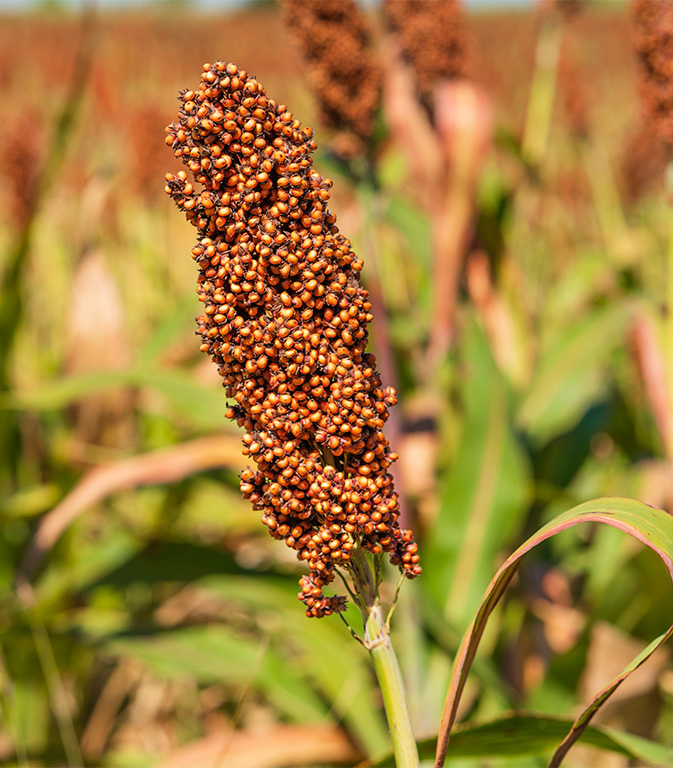 Prediction of biomass sorghum hybrids using environmental feature-enriched genomic combining ability models in tropical environmentsPedro C. O. Ribeiro, Reka Howard, Diego Jarquin, Isadora C. M. Oliveira, Saulo Chaves, Pedro C. S. Carneiro, Vander F. Souza, Robert E. Schaffert, Cynthia M. B. Damasceno, Rafael A. C. Parrella, Kaio Olimpio G. Dias, and Maria M. PastinaTheoretical and Applied Genetics, May 2025
Prediction of biomass sorghum hybrids using environmental feature-enriched genomic combining ability models in tropical environmentsPedro C. O. Ribeiro, Reka Howard, Diego Jarquin, Isadora C. M. Oliveira, Saulo Chaves, Pedro C. S. Carneiro, Vander F. Souza, Robert E. Schaffert, Cynthia M. B. Damasceno, Rafael A. C. Parrella, Kaio Olimpio G. Dias, and Maria M. PastinaTheoretical and Applied Genetics, May 2025Incorporating environmental features improved the predictive ability of genomic prediction models under multi-environment trials in tropical conditions.
@article{ribeiro_prediction_2025, title = {Prediction of biomass sorghum hybrids using environmental feature-enriched genomic combining ability models in tropical environments}, volume = {138}, issn = {1432-2242}, url = {https://doi.org/10.1007/s00122-025-04895-y}, doi = {10.1007/s00122-025-04895-y}, number = {6}, urldate = {2025-05-12}, journal = {Theoretical and Applied Genetics}, author = {Ribeiro, Pedro C. O. and Howard, Reka and Jarquin, Diego and Oliveira, Isadora C. M. and Chaves, Saulo and Carneiro, Pedro C. S. and Souza, Vander F. and Schaffert, Robert E. and Damasceno, Cynthia M. B. and Parrella, Rafael A. C. and Dias, Kaio Olimpio G. and Pastina, Maria M.}, month = may, year = {2025}, pages = {113}, dimensions = {true} } -
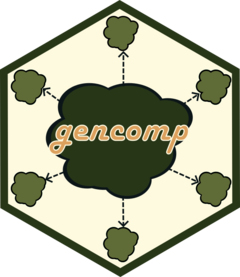 Incorporating spatial and genetic competition into breeding pipelines with the R package gencompSaulo Chaves, Filipe M. Ferreira, Getulio C. Ferreira, Salvador A. Gezan, and Kaio Olimpio G. DiasHeredity, Jan 2025
Incorporating spatial and genetic competition into breeding pipelines with the R package gencompSaulo Chaves, Filipe M. Ferreira, Getulio C. Ferreira, Salvador A. Gezan, and Kaio Olimpio G. DiasHeredity, Jan 2025Genetic competition can obscure the true merit of selection candidates, potentially leading to altered genotype rankings and a divergence between expected and actual genetic gains. Despite a wealth of literature on genetic competition in plant and animal breeding, the separation of genetic values into direct genetic effects (DGE, related to a genotype’s merit) and indirect genetic effects (IGE, related to the effects of a genotype’s alleles on its neighbor’s phenotype) in linear mixed models is often overlooked, likely due to the complexity involved. To address this, we introduce gencomp, a new R package designed to simplify the use of (spatial-) genetic competition models in crop and tree breeding routines. gencomp includes functions for constructing the genetic competition matrix, fitting (spatial-) genetic competition models via the variance-component approach, and extracting key results such as variance components, heritabilities, competition classes, and total genetic values. For tree breeding, gencomp also calculates the merit of different clonal mixtures using the estimated DGE and IGE of the selection candidates. In this paper, we first present the theoretical foundation of the methods implemented in the package. We then demonstrate the use of gencomp with two datasets: one simulated from a Eucalyptus spp. trial and a real potato dataset. We used both datasets to demonstrate the influence of genetic competition in variance component estimates, heritabilities and selection. Despite the dependency on ASReml-R, a paid resource, gencomp is a user-friendly tool that can popularize genetic competition models, contributing to more informed decision-making in plant breeding.
@article{chaves_incorporating_2025, title = {Incorporating spatial and genetic competition into breeding pipelines with the {R} package gencomp}, volume = {134}, copyright = {2025 The Author(s), under exclusive licence to The Genetics Society}, issn = {1365-2540}, doi = {10.1038/s41437-024-00743-9}, language = {en}, urldate = {2025-01-16}, journal = {Heredity}, author = {Chaves, Saulo and Ferreira, Filipe M. and Ferreira, Getulio C. and Gezan, Salvador A. and Dias, Kaio Olimpio G.}, month = jan, year = {2025}, keywords = {Plant breeding}, pages = {129--141}, dimensions = {true}, } -
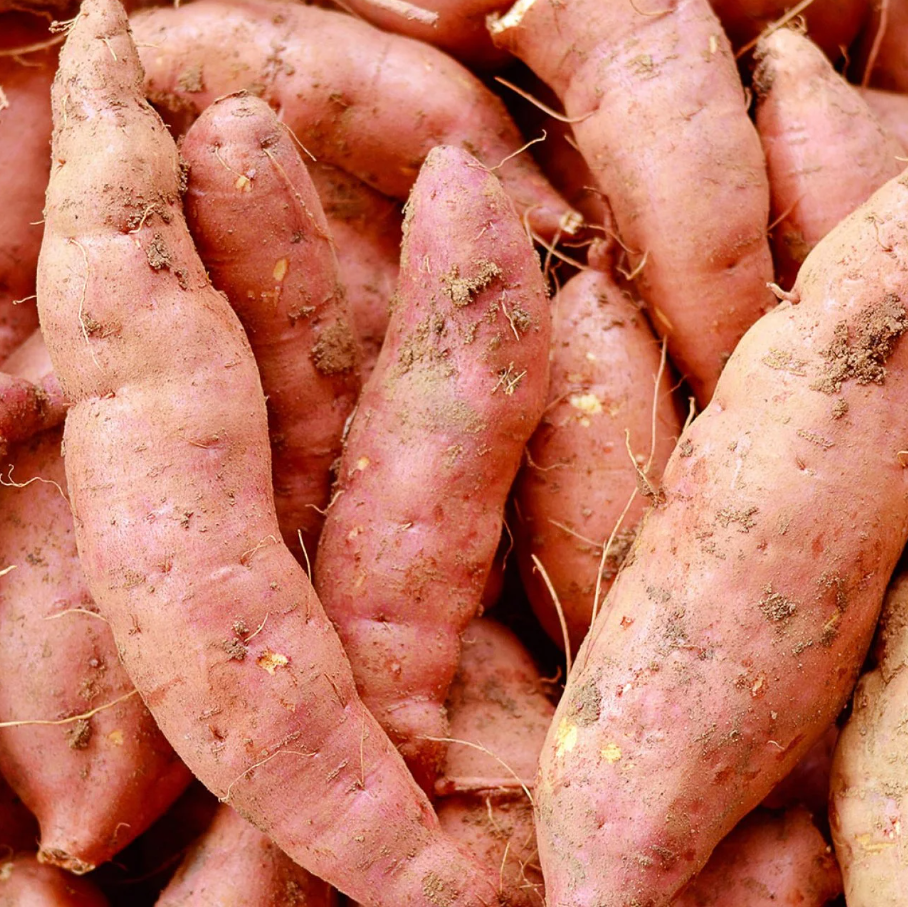 Tester selection for combining ability estimation of storage root yield and sweetpotato virus disease in sweetpotato breedingJolien Swanckaert, Iara Gonçalves Santos, Saulo Chaves, Reuben Ssali, Robert O. M. Mwanga, Camila Ferreira Azevedo, Thiago O. Mendes, Bert De Boeck, Raul Eyzaguirre, Mercy Kitavi, Dorcus C. Gemenet, Maria Andrade, Wolfgang J. Grüneberg, Hannele Lindqvist-Kreuze, G. Craig Yencho, Hugo Campos, and Guilherme da Silva PereiraScientific Reports, Feb 2025
Tester selection for combining ability estimation of storage root yield and sweetpotato virus disease in sweetpotato breedingJolien Swanckaert, Iara Gonçalves Santos, Saulo Chaves, Reuben Ssali, Robert O. M. Mwanga, Camila Ferreira Azevedo, Thiago O. Mendes, Bert De Boeck, Raul Eyzaguirre, Mercy Kitavi, Dorcus C. Gemenet, Maria Andrade, Wolfgang J. Grüneberg, Hannele Lindqvist-Kreuze, G. Craig Yencho, Hugo Campos, and Guilherme da Silva PereiraScientific Reports, Feb 2025General combining ability (GCA) is the major selection criterion for new sweetpotato (Ipomoea batatas) parents in a reciprocal recurrent selection (RRS) scheme. Here we aimed to estimate GCA and specific combining ability (SCA) by using 16 potential testers involved in an 8 × 8 partial diallel and propose a procedure to identify testers in sweetpotato breeding. Data on storage root yield in tons per hectare (rytha), and sweetpotato virus disease (vir2) from 64 families (1,913 clones) were collected in five trials at two locations in Uganda. The estimates of the female GCA accounted for the largest additive genetic variation for storage root yield compared to the male GCA for both traits. Mid-parent heterosis ranged from − 6.2 to 7% for rytha, and − 1.1 to 1.3% for vir2 in the progeny families. A stepwise procedure to identify testers top-ranked ‘NASPOT 7’ as a dual tester for both traits. Besides this parent, ‘Ejumula’ and ‘NASPOT 10 O’ for rytha, and ‘NASPOT 1’, ‘NK259L’, ‘SPK004’, and ‘NASPOT 11’ for vir2 are particularly suitable as respective single-trait testers. Testers are important in many plant breeding programs to enhance efficiency of RRS, and thus other crop species might benefit from the strategy and methods applied herein.
@article{swanckaert_tester_2025, title = {Tester selection for combining ability estimation of storage root yield and sweetpotato virus disease in sweetpotato breeding}, volume = {15}, copyright = {2025 The Author(s)}, issn = {2045-2322}, url = {https://www.nature.com/articles/s41598-025-88609-w}, doi = {10.1038/s41598-025-88609-w}, language = {en}, number = {1}, urldate = {2025-02-10}, journal = {Scientific Reports}, author = {Swanckaert, Jolien and Santos, Iara Gonçalves and Chaves, Saulo and Ssali, Reuben and Mwanga, Robert O. M. and Azevedo, Camila Ferreira and Mendes, Thiago O. and De Boeck, Bert and Eyzaguirre, Raul and Kitavi, Mercy and Gemenet, Dorcus C. and Andrade, Maria and Grüneberg, Wolfgang J. and Lindqvist-Kreuze, Hannele and Yencho, G. Craig and Campos, Hugo and Pereira, Guilherme da Silva}, month = feb, year = {2025}, keywords = {Plant breeding, Plant genetics}, pages = {4951}, dimensions = {true} }
2024
- Improving multi-harvest data analysis in cacao breeding using random regressionAndressa K. S. Alves, Saulo Chaves, Maurício S. Araújo, Renan G. Malikouski, Caio M. V. C. Almeida, and Luiz A. S. DiasEuphytica, Feb 2024
This study investigates the application of random regression models for analyzing multi-harvest data in cacao breeding. The aim was to understand the genetic dynamics over ten harvest years and select high-performing genotypes. The trial was conducted in Ouro Preto D’Oeste, Rondônia, Brazilian Amazon. Twenty biparental cacao crosses were evaluated over ten years using random regression models. Models with different polynomial degrees and covariance structures for the residual effects were compared, and the best model was determined using Akaike Information Criterion. We also compared the genetic gains after selecting using three criteria: breeding values, persistence, and area under genotypic trajectories. The best random regression models differed between traits. Genotype-by-harvest interactions were observed, emphasizing the temporal variability in genotype performance. Genetic correlations across harvests illustrated the dynamic nature of genetic expression. Accuracy and heritability fluctuated over successive harvests, emphasizing the complexity of genotype performance prediction. Non-linear genotypic trajectories revealed the presence of unique genetic attributes associated with each trait, with number of healthy fruits showing a tendency towards standardization and dry bean weight displaying a more complex pattern. Consistency in selecting genotypes based on number of healthy fruits highlights reliable selection. Conversely, the variability in choosing top genotypes for dry bean weight underscores the need for cautious selection strategies, as it is a more complex trait to optimize. Despite these insights, future research should consider specific environmental conditions, management practices, and the integration of genomic information for a more comprehensive understanding of genetic dynamics in cacao breeding.
@article{alves_improving_2024, title = {Improving multi-harvest data analysis in cacao breeding using random regression}, volume = {220}, copyright = {All rights reserved}, issn = {1573-5060}, doi = {10.1007/s10681-023-03270-6}, language = {en}, number = {1}, urldate = {2023-12-15}, journal = {Euphytica}, author = {Alves, Andressa K. S. and Chaves, Saulo and Araújo, Maurício S. and Malikouski, Renan G. and Almeida, Caio M. V. C. and Dias, Luiz A. S.}, year = {2024}, keywords = {Repeated measures, Theobroma cacao, Genotype-by-harvest interaction, Legendre polynomials}, pages = {7}, dimensions = {true} } -
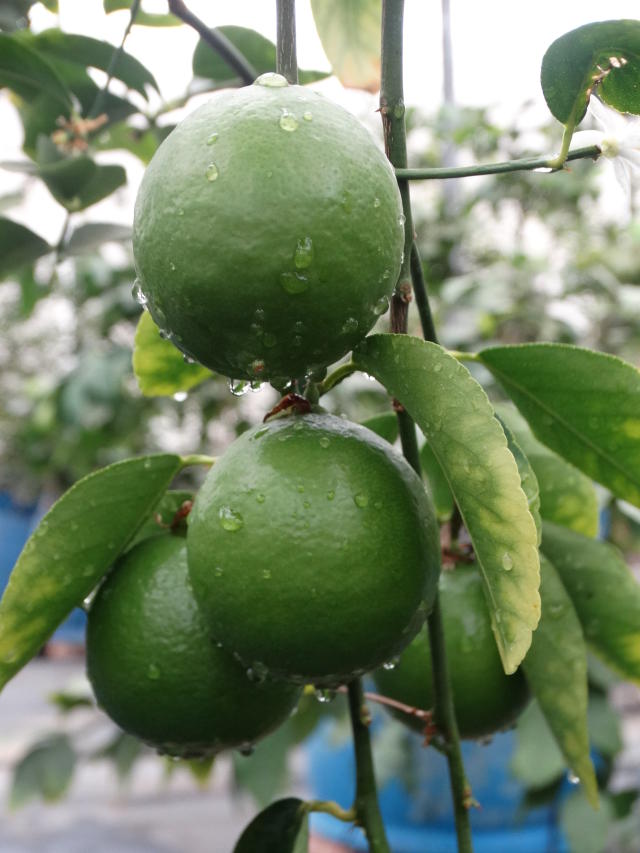 Recommendation of Tahiti acid lime cultivars through Bayesian probability modelsRenan Garcia Malikouski, Filipe Manoel Ferreira, Saulo Chaves, Evellyn Giselly Oliveira Couto, Kaio Olimpio Graças Dias, and Leonardo Lopes BheringPLOS ONE, Feb 2024
Recommendation of Tahiti acid lime cultivars through Bayesian probability modelsRenan Garcia Malikouski, Filipe Manoel Ferreira, Saulo Chaves, Evellyn Giselly Oliveira Couto, Kaio Olimpio Graças Dias, and Leonardo Lopes BheringPLOS ONE, Feb 2024@article{malikouski_recommendation_2024, title = {Recommendation of {Tahiti} acid lime cultivars through {Bayesian} probability models}, volume = {19}, copyright = {All rights reserved}, doi = {10.1371/journal.pone.0299290}, language = {en}, number = {3}, journal = {PLOS ONE}, author = {Malikouski, Renan Garcia and Ferreira, Filipe Manoel and Chaves, Saulo and Couto, Evellyn Giselly Oliveira and Dias, Kaio Olimpio Graças and Bhering, Leonardo Lopes}, year = {2024}, pages = {e0299290}, dimensions = {true} } -
 Statistical methods for genetic evaluation and selection of parents and hybrids of grain sorghumLeonardo Volpato, Saulo Chaves, Rodrigo Silva Alves, João Romero Amaral Santos Carvalho Rocha, Regimar Garcia Santos, Larissa Pereira Ribeiro Teodoro, Flávio Dessaune Tardin, Aisy Botega Baldoni, Cicero Beserra Menezes, Marcos Deon Vilela Resende, and Paulo Eduardo TeodoroSouth African Journal of Botany, Apr 2024
Statistical methods for genetic evaluation and selection of parents and hybrids of grain sorghumLeonardo Volpato, Saulo Chaves, Rodrigo Silva Alves, João Romero Amaral Santos Carvalho Rocha, Regimar Garcia Santos, Larissa Pereira Ribeiro Teodoro, Flávio Dessaune Tardin, Aisy Botega Baldoni, Cicero Beserra Menezes, Marcos Deon Vilela Resende, and Paulo Eduardo TeodoroSouth African Journal of Botany, Apr 2024Grain sorghum is one of the most important cereals and is grown in arid and semi-arid regions due its high photosynthetic efficiency and tolerance to water deficit. Genotype-by-environment interactions and multi-trait selection are the main challenges in grain sorghum breeding. The objective of this study was to compare statistical methods for genetic evaluation and selection of parents and hybrids of grain sorghum. To this end, we conducted two trials and measured flowering, plant height and grain yield traits. Bayesian and frequentist multi-trait multi-environment (MTME) models were fitted through Markov Chain Monte Carlo (MCMC) and Restricted Maximum Likelihood/Best Linear Unbiased Prediction (REML/BLUP), respectively. The Additive Index was used to perform the multi-trait selection. The Bayesian inference is more flexible, and our results suggest that the Bayesian MTME model outperform the frequentist MTME model and should be preferred for genetic evaluation. The Additive Index can be used for genetic selection of parents and hybrids of grain sorghum.
@article{volpato_statistical_2024, title = {Statistical methods for genetic evaluation and selection of parents and hybrids of grain sorghum}, volume = {167}, copyright = {All rights reserved}, doi = {10.1016/j.sajb.2024.02.050}, urldate = {2024-03-06}, journal = {South African Journal of Botany}, author = {Volpato, Leonardo and Chaves, Saulo and Alves, Rodrigo Silva and Rocha, João Romero Amaral Santos Carvalho and Santos, Regimar Garcia and Teodoro, Larissa Pereira Ribeiro and Tardin, Flávio Dessaune and Baldoni, Aisy Botega and Menezes, Cicero Beserra and Resende, Marcos Deon Vilela and Teodoro, Paulo Eduardo}, month = apr, year = {2024}, keywords = {Selection index, Genetic correlation, Bayesian inference, Frequentist inference, Genotype-by-environment interactions}, pages = {535--541}, dimensions = {true} } -
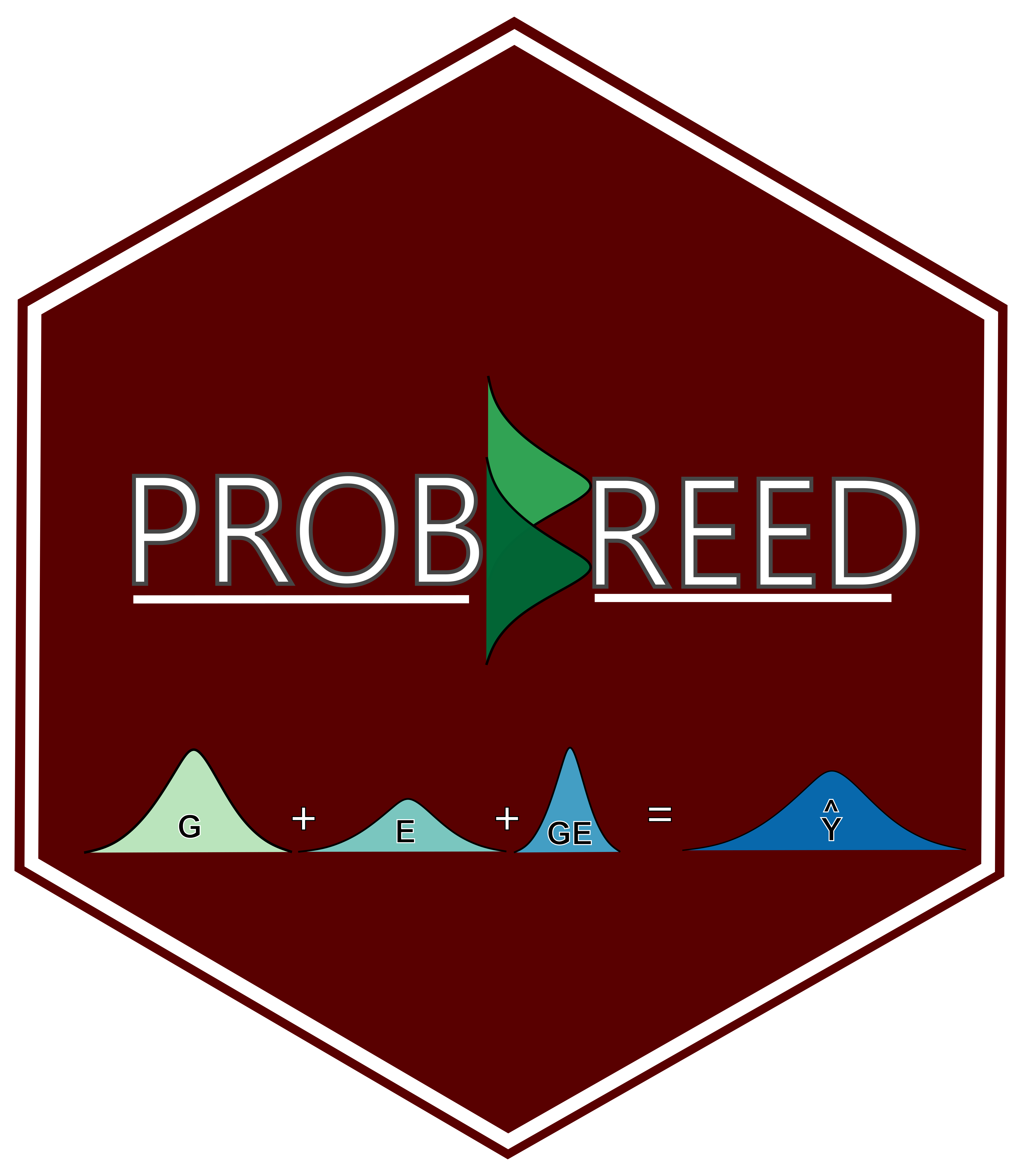 ProbBreed: a novel tool for calculating the risk of cultivar recommendation in multienvironment trialsSaulo Chaves, Matheus D. Krause, Luiz A. S. Dias, Antonio A. F. Garcia, and Kaio O. G. DiasG3 Genes|Genomes|Genetics, Mar 2024
ProbBreed: a novel tool for calculating the risk of cultivar recommendation in multienvironment trialsSaulo Chaves, Matheus D. Krause, Luiz A. S. Dias, Antonio A. F. Garcia, and Kaio O. G. DiasG3 Genes|Genomes|Genetics, Mar 2024Neglecting genotype-by-environment interactions in multienvironment trials (MET) increases the risk of flawed cultivar recommendations for growers. Recent advancements in probability theory coupled with cutting-edge software offer a more streamlined decision-making process for selecting suitable candidates across diverse environments. Here, we present the user-friendly ProbBreed package in R, which allows breeders to calculate the probability of a given genotype outperforming competitors under a Bayesian framework. This article outlines the package’s basic workflow and highlights its key features, ranging from MET model fitting to estimating the per se and pairwise probabilities of superior performance and stability for selection candidates. Remarkably, only the selection intensity is required to compute these probabilities. By democratizing this complex yet efficient methodology, ProbBreed aims to enhance decision-making and ultimately contribute to more accurate cultivar recommendations in breeding programs.
@article{chaves_probbreed_2024, title = {{ProbBreed}: a novel tool for calculating the risk of cultivar recommendation in multienvironment trials}, volume = {14}, issn = {2160-1836}, shorttitle = {{ProbBreed}}, url = {https://doi.org/10.1093/g3journal/jkae013}, doi = {10.1093/g3journal/jkae013}, number = {3}, urldate = {2024-03-12}, journal = {G3 Genes|Genomes|Genetics}, author = {Chaves, Saulo and Krause, Matheus D. and Dias, Luiz A. S. and Garcia, Antonio A. F. and Dias, Kaio O. G.}, month = mar, year = {2024}, pages = {jkae013}, dimensions = {true}, } - GIS-FA: an approach to integrating thematic maps, factor-analytic, and envirotyping for cultivar targetingMaurício S. Araújo, Saulo Chaves, Luiz A. S. Dias, Filipe M. Ferreira, Guilherme R. Pereira, André R. G. Bezerra, Rodrigo S. Alves, Alexandre B. Heinemann, Flávio Breseghello, Pedro C. S. Carneiro, Matheus D. Krause, Germano Costa-Neto, and Kaio O. G. DiasTheoretical and Applied Genetics, Mar 2024
We propose an “enviromics” prediction model for recommending cultivars based on thematic maps aimed at decision-makers.
@article{araujo_gis-fa_2024, title = {{GIS}-{FA}: an approach to integrating thematic maps, factor-analytic, and envirotyping for cultivar targeting}, volume = {137}, issn = {1432-2242}, shorttitle = {{GIS}-{FA}}, doi = {10.1007/s00122-024-04579-z}, language = {en}, number = {4}, urldate = {2024-03-12}, journal = {Theoretical and Applied Genetics}, author = {Araújo, Maurício S. and Chaves, Saulo and Dias, Luiz A. S. and Ferreira, Filipe M. and Pereira, Guilherme R. and Bezerra, André R. G. and Alves, Rodrigo S. and Heinemann, Alexandre B. and Breseghello, Flávio and Carneiro, Pedro C. S. and Krause, Matheus D. and Costa-Neto, Germano and Dias, Kaio O. G.}, month = mar, year = {2024}, pages = {80}, dimensions = {true}, } - Multi-trait selection for nutritional and physiological quality of cacao genotypes in irrigated and non-irrigated environmentsMaurício S. Araújo, Saulo Chaves, Guilherme R. Pereira, Matheus H. D. Guimarães, Andressa K. S. Alves, Luiz Antônio S. Dias, Carlos A. S. Souza, and Marco A. G. AguilarScientific Reports, Mar 2024
Water is a scarce, strategic resource and the most important input for economic development, especially in agricultural countries such as Brazil. Cocoa production is directly related to water availability, and, as climate changes, selecting drought-tolerant genotypes is vital to keep cacao crops sustainable. Here, we evaluated cacao genotypes under irrigated and water-stressed conditions and selected drought-tolerant ones based on nutritional and physiological traits. Thirty-nine genotypes were monitored for three years for agronomic traits and higher fruit yield. After this evaluation, the 18 most promising genotypes were evaluated in a randomized block design, under a 2 (with and without irrigation) \{}times\\ 18 (genotypes) factorial arrangement, with three replicates and five plants per plot. We evaluated seven physiological and 11 nutritional traits, selecting genotypes based on the Genotype-by-Trait Biplot approach. Significant effects (p \textless 0.05) were observed for the nutritional traits N, P, Mg, S, Zn, Cu, Mn and for the physiological traits CO2 assimilation rate (A), stomatal conductance (gs), transpiration (E), intercellular and atmospheric CO2 concentrations (Ci/Ca), intrinsic water use efficiency (A/gs), instantaneous water use efficiency (A/E), and instantaneous carboxylation efficiency (A/Ci), as determined by analysis of variance. The genotype \{}times\\ irrigation treatment interaction was significant (p \textless 0.05) for the traits A, gs, and E. Genotypes CP 41, CP 43, and CCN 51 exhibited superior performance for both nutritional and physiological traits (A, gs, and E). In the irrigated environment, CP 41 showed superiority in traits such as P, A/E, A/gs, Mn, S, and Zn. Conversely, under non-irrigated conditions, CP 43 exhibited better performance in nutritional properties, specifically Mn, Mg, and Zn. Notably, in both irrigated and non-irrigated environments, CCN 51 excelled in key physiological traits, including A/Ci, A/E, and A/gs. This robust performance across diverse conditions suggests that these three genotypes possess physiological mechanisms to endure water-stressed conditions. Our research can generate valuable insights into these genotypes informing suitable choices for cocoa cultivation, especially in the context of global climate change.
@article{araujo_multi-trait_2024, title = {Multi-trait selection for nutritional and physiological quality of cacao genotypes in irrigated and non-irrigated environments}, volume = {14}, issn = {2045-2322}, doi = {10.1038/s41598-024-56556-7}, language = {en}, number = {1}, urldate = {2024-03-21}, journal = {Scientific Reports}, author = {Araújo, Maurício S. and Chaves, Saulo and Pereira, Guilherme R. and Guimarães, Matheus H. D. and Alves, Andressa K. S. and Dias, Luiz Antônio S. and Souza, Carlos A. S. and Aguilar, Marco A. G.}, month = mar, year = {2024}, keywords = {Plant breeding, Agricultural genetics}, pages = {6368}, dimensions = {true} } -
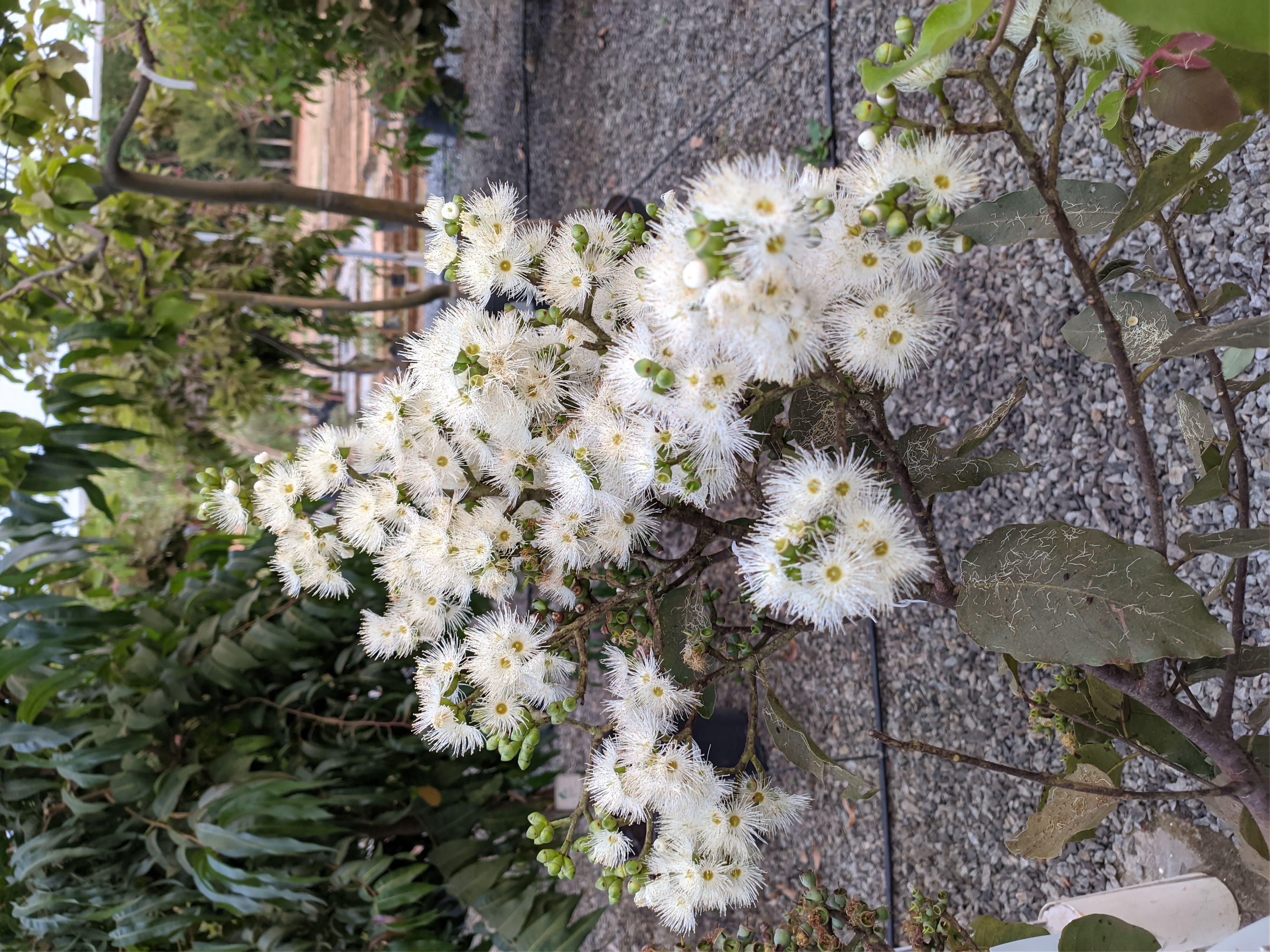 Competition effects can mislead selection in eucalypt breeding trialsFilipe Manoel Ferreira, Saulo Chaves, Osmarino Pires Santos, Andrei Caíque Pires Nunes, Evandro Vagner Tambarussi, Guilherme Silva Pereira, Gleison Augusto Santos, Leonardo Lopes Bhering, and Kaio Olimpio Graças DiasForest Ecology and Management, Mar 2024
Competition effects can mislead selection in eucalypt breeding trialsFilipe Manoel Ferreira, Saulo Chaves, Osmarino Pires Santos, Andrei Caíque Pires Nunes, Evandro Vagner Tambarussi, Guilherme Silva Pereira, Gleison Augusto Santos, Leonardo Lopes Bhering, and Kaio Olimpio Graças DiasForest Ecology and Management, Mar 2024@article{ferreira_competition_2024, title = {Competition effects can mislead selection in eucalypt breeding trials}, volume = {561}, copyright = {All rights reserved}, doi = {10.1016/j.foreco.2024.121892}, language = {en}, journal = {Forest Ecology and Management}, author = {Ferreira, Filipe Manoel and Chaves, Saulo and Santos, Osmarino Pires and Nunes, Andrei Caíque Pires and Tambarussi, Evandro Vagner and Pereira, Guilherme Silva and Santos, Gleison Augusto and Bhering, Leonardo Lopes and Dias, Kaio Olimpio Graças}, year = {2024}, pages = {121892}, dimensions = {true} } -
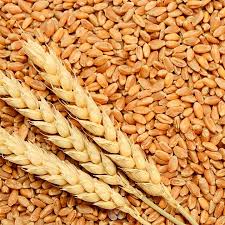 Modeling spatial trends and selecting tropical wheat genotypes in multi-environment trialsCaique Machado Silva, Victor Silva Signorini, Saulo Chaves, Diana Jhulia Palheta De Souza, Gabriel Wolter Lima, Cleiton Renato Casagrande, Henrique Caletti Mezzomo, João Paulo Oliveira Ribeiro, and Maicon NardinoCrop Breeding and Applied Biotechnology, Mar 2024
Modeling spatial trends and selecting tropical wheat genotypes in multi-environment trialsCaique Machado Silva, Victor Silva Signorini, Saulo Chaves, Diana Jhulia Palheta De Souza, Gabriel Wolter Lima, Cleiton Renato Casagrande, Henrique Caletti Mezzomo, João Paulo Oliveira Ribeiro, and Maicon NardinoCrop Breeding and Applied Biotechnology, Mar 2024In many cases, traditional analysis of breeding trials based on analysis of variance (ANOVA) do not allow a suitable genetic evaluation. Alternatively, mixed model-based approaches create the possibility of dealing with unbalanced data and modeling spatial trends. The aims of this study were to compare the goodness-of-fit of the model and the genotype ranking through different residual modeling approaches and to select the best performing tropical wheat genotypes based on the best-fitting model. A panel of tropical wheat genotypes was evaluated in three field trials conducted between 2020 and 2021 for grain yield. Linear mixed model analyses were used on the data to estimate the genetic parameters and to predict the genotypic values in analyses of single- and multi-environment trials. Accounting for spatial trends in the analyses of single- and multi-environment trials provides better outcomes than the compound symmetry model does.
@article{silva_modeling_2024, title = {Modeling spatial trends and selecting tropical wheat genotypes in multi-environment trials}, volume = {24}, copyright = {All rights reserved}, doi = {10.1590/1984-70332024v24n1a10}, language = {en}, number = {2}, urldate = {2024-06-10}, journal = {Crop Breeding and Applied Biotechnology}, author = {Silva, Caique Machado and Signorini, Victor Silva and Chaves, Saulo and Souza, Diana Jhulia Palheta De and Lima, Gabriel Wolter and Casagrande, Cleiton Renato and Mezzomo, Henrique Caletti and Ribeiro, João Paulo Oliveira and Nardino, Maicon}, year = {2024}, pages = {e47582421}, dimensions = {true} } -
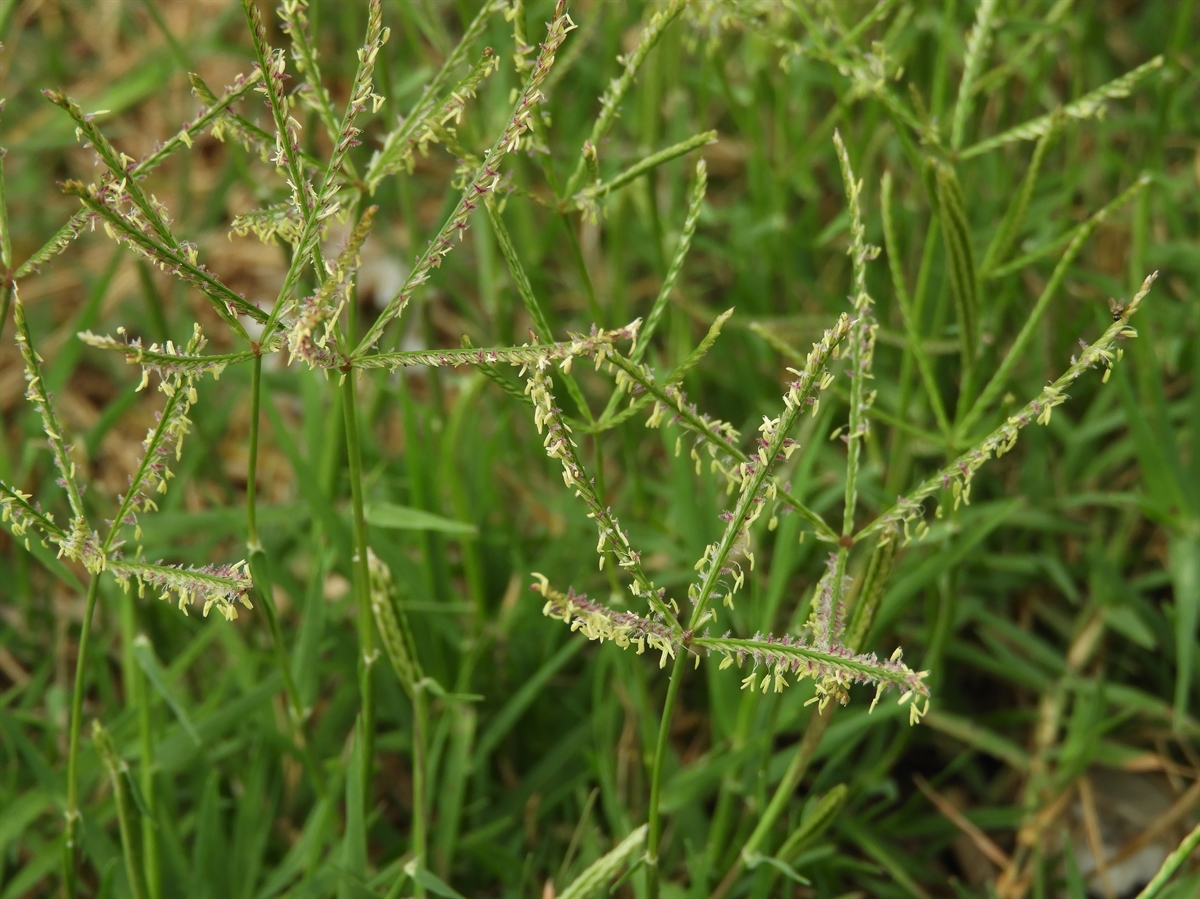 Applications of linear mixed models in Cynodon spp. breedingArthur Mayrink Elizeu, Marco Antônio Peixoto, Jeniffer Santana Pinto Coelho Evangelista, Saulo Chaves, Emanuel Ferrari Nascimento, Flávio Benites, Paulo Eduardo Teodoro, Kaio O. G. Dias, and L. L. BheringCrop Breeding and Applied Biotechnology, Mar 2024
Applications of linear mixed models in Cynodon spp. breedingArthur Mayrink Elizeu, Marco Antônio Peixoto, Jeniffer Santana Pinto Coelho Evangelista, Saulo Chaves, Emanuel Ferrari Nascimento, Flávio Benites, Paulo Eduardo Teodoro, Kaio O. G. Dias, and L. L. BheringCrop Breeding and Applied Biotechnology, Mar 2024Species of the genus Cynodon are among the most cultivated forage crops in the world due to their high yield and nutritional quality, and its use in cattle feeding has been associated with gains in animal weight and increased milk production. The objective of this study was to model covariance structures in Cynodon spp. clones and study the changes in ranking of the selected genotypes, since it is believed that affects the ranking of genotypes. A total of 202 genotypes were evaluated in an experiment conducted in an augmented block design with four replications and four harvests. The genotypes were assessed for plant height, green weight, percentage of dry matter, and plant vigor. Nineteen repeated measures models with different covariance structures were tested. The best-fitted model adopts the CORH covariance structure for the genetic effects. Correct modeling of the covariance structure affected the ranking of genotypes in all variables evaluated.
@article{elizeu_applications_2024, title = {Applications of linear mixed models in {{Cynodon}} spp. breeding}, volume = {24}, copyright = {All rights reserved}, doi = {10.1590/1984-70332024v24n3a27}, language = {en}, number = {3}, journal = {Crop Breeding and Applied Biotechnology}, author = {Elizeu, Arthur Mayrink and Peixoto, Marco Antônio and Evangelista, Jeniffer Santana Pinto Coelho and Chaves, Saulo and Nascimento, Emanuel Ferrari and Benites, Flávio and Teodoro, Paulo Eduardo and Dias, Kaio O. G. and Bhering, L. L.}, year = {2024}, pages = {e48592432}, dimensions = {true} } -
 Factor analytic selection tools and environmental feature-integration enable holistic decision-making in Eucalyptus breedingSaulo Chaves, Michelle B. Damacena, Kaio Olimpio G. Dias, Caio Varonill Almada Oliveira, and Leonardo L. BheringScientific Reports, Aug 2024
Factor analytic selection tools and environmental feature-integration enable holistic decision-making in Eucalyptus breedingSaulo Chaves, Michelle B. Damacena, Kaio Olimpio G. Dias, Caio Varonill Almada Oliveira, and Leonardo L. BheringScientific Reports, Aug 2024Understanding the genotype-by-environment interaction (GEI) and considering it in the selection process is a sine qua non condition for the expansion of Brazilian eucalyptus silviculture. This study’s objective is to select high-performance and stable eucalyptus clones based on a novel selection index that considers the Factor Analytic Selection Tools (FAST) and the clone’s reliability. The investigation explores the nuances interplay of GEI and extends its insights by scrutinizing the relationship between latent factors and real environmental features. The analysis, conducted across seven trials in five Brazilian states involving 78 clones, employs FAST. The clonal selection was performed using an extended FAST index weighted by the clone’s reliability. Further insights about GEI emerge from the integration of factor loadings with 25 environmental features through a principal component analysis. Ten clones, distinguished by high performance, stability, and reliability, have been selected across the target population of environments. The environmental features most closely associated with factor loadings, encompassing air temperature, radiation, and soil characteristics, emerge as pivotal drivers of GEI within this dataset. This study contributes insights to eucalyptus breeders, equipping them to enhance decision-making by harnessing a holistic understanding-from the genotypes under evaluation to the diverse environments anticipated in commercial plantations.
@article{chaves_factor_2024, title = {Factor analytic selection tools and environmental feature-integration enable holistic decision-making in {{Eucalyptus}} breeding}, volume = {14}, copyright = {2024 The Author(s)}, doi = {10.1038/s41598-024-69299-2}, language = {en}, number = {1}, urldate = {2024-08-08}, journal = {Scientific Reports}, author = {Chaves, Saulo and Damacena, Michelle B. and Dias, Kaio Olimpio G. and Oliveira, Caio Varonill Almada and Bhering, Leonardo L.}, month = aug, year = {2024}, keywords = {Plant breeding, Agricultural genetics}, pages = {18429}, dimensions = {true} } -
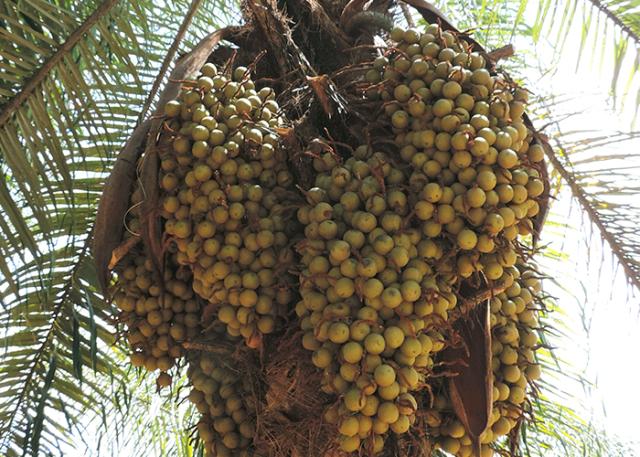 Training set optimization is a feasible alternative for perennial orphan crop domestication and germplasm management: an Acrocomia aculeata exampleEvellyn G. O. Couto, Saulo Chaves, Kaio Olimpio G. Dias, Jonathan A Morales-Marroqu, Alessandro Alves-Pereira, Carlos Augusto Colombo, and Maria Imaculada ZucchiFrontiers in Plant Science, Aug 2024
Training set optimization is a feasible alternative for perennial orphan crop domestication and germplasm management: an Acrocomia aculeata exampleEvellyn G. O. Couto, Saulo Chaves, Kaio Olimpio G. Dias, Jonathan A Morales-Marroqu, Alessandro Alves-Pereira, Carlos Augusto Colombo, and Maria Imaculada ZucchiFrontiers in Plant Science, Aug 2024@article{couto_training_2024, title = {Training set optimization is a feasible alternative for perennial orphan crop domestication and germplasm management: an {{Acrocomia} aculeata} example}, volume = {15}, copyright = {All rights reserved}, doi = {10.3389/fpls.2024.1441683}, journal = {Frontiers in Plant Science}, author = {Couto, Evellyn G. O. and Chaves, Saulo and Dias, Kaio Olimpio G. and Morales-Marroqu, Jonathan A and Alves-Pereira, Alessandro and Colombo, Carlos Augusto and Zucchi, Maria Imaculada}, year = {2024}, pages = {1441683}, dimensions = {true}, } -
 Realized genetic gain with reciprocal recurrent selection in a Eucalyptus breeding programSaulo Chaves, Luiz A. S. Dias, Rodrigo S. Alves, Filipe M. Ferreira, Maurício S. Araújo, Marcos D. V. Resende, Elizabete K. Takahashi, João E. Souza, Fernando P. Leite, Samuel B. Fernandes, and Kaio Olimpio G. DiasTree Genetics & Genomes, Aug 2024
Realized genetic gain with reciprocal recurrent selection in a Eucalyptus breeding programSaulo Chaves, Luiz A. S. Dias, Rodrigo S. Alves, Filipe M. Ferreira, Maurício S. Araújo, Marcos D. V. Resende, Elizabete K. Takahashi, João E. Souza, Fernando P. Leite, Samuel B. Fernandes, and Kaio Olimpio G. DiasTree Genetics & Genomes, Aug 2024Key message: Eucalyptus breeding can benefit from strategies that capture dominance effects, as shown by the improvement in mean annual increment of wood volume across cycles of RRS. Abstract: There is no empirical validation of reciprocal recurrent selection (RRS) in Eucalyptus breeding. Our study helps to fill this gap by quantifying the realized response to selection achieved after two cycles of RRS involving Eucalyptus urophylla and E. grandis. We also investigated the selection effects on the genetic parameters of the breeding populations. We evaluated 25 trials of the first cycle (C1) of RRS and 12 trials of the second cycle (C2) of RRS. These trials were established in two different regions, separated according to altitude. Fitting linear mixed models enabled the estimation of variance components and the prediction of mean components (general and specific hybridizing abilities). The realized response to selection was calculated as the difference between the mean of the predicted genotypic values of the C1 and C2. The RRS effectively improved the mean annual increment of wood volume by 28.5% in the high-altitude region and 12.3% in the low-altitude region from the C1 to C2. The genetic variability also increased as a result of the new genotypes that arose through recombination. These findings provide insights for decision-making and reinforce that Eucalyptus breeding can benefit from strategies that capture dominance effects.
@article{chaves_realized_2024, title = {Realized genetic gain with reciprocal recurrent selection in a {{Eucalyptus}} breeding program}, volume = {20}, copyright = {All rights reserved}, doi = {10.1007/s11295-024-01678-2}, language = {en}, journal = {Tree Genetics \& Genomes}, author = {Chaves, Saulo and Dias, Luiz A. S. and Alves, Rodrigo S. and Ferreira, Filipe M. and Araújo, Maurício S. and Resende, Marcos D. V. and Takahashi, Elizabete K. and Souza, João E. and Leite, Fernando P. and Fernandes, Samuel B. and Dias, Kaio Olimpio G.}, year = {2024}, pages = {47}, dimensions = {true}, } -
 High throughput phenotyping in soybean breeding using RGB image vegetation indices based on droneAndressa K. S. Alves, Maurício S. Araújo, Saulo Chaves, Luiz Antônio S. Dias, Lucas P. Corrêdo, Gabriel G. F. A. Pessoa, and André R. G. BezerraScientific Reports, Dec 2024
High throughput phenotyping in soybean breeding using RGB image vegetation indices based on droneAndressa K. S. Alves, Maurício S. Araújo, Saulo Chaves, Luiz Antônio S. Dias, Lucas P. Corrêdo, Gabriel G. F. A. Pessoa, and André R. G. BezerraScientific Reports, Dec 2024This study investigates the effectiveness of high-throughput phenotyping (HTP) using RGB images from unmanned aerial vehicles (UAVs) to assess vegetation indices (VIs) in different soybean pure lines. The VIs were accessed at various stages of crop development and correlated with agronomic performance traits. The field research was conducted in the experimental area of the Mato Grosso do Sul Foundation, Brazil, with 60 soybean pure lines. RGB images were captured at multiple stages of development (28, 37, 49, 70, 86, 105, 115, and 120 days after sowing). We used a linear mixed effects model, with restricted maximum likelihood (REML)/best linear unbiased prediction (BLUP) methods, to estimate variance components and genetic correlations, and to predict genotypic values. Significant genetic differences were identified among genotypes for all agronomic traits evaluated (p\textless 0.001), with high accuracy and heritability for plant height, maturity at R8, and 100-seed weight. There was a significant genotype \{}times\\flight data interaction impact on VI expression, emphasizing the importance of timing data collection to enhance HTP with VIs in agronomic performance evaluation. In the early stages, the indices varied depending on the environment. On the other hand, the indices showed higher correlations with the traits of plant height and maturity at the R8 stage, at 105, 115, and 120 days after sowing. HTP with VIs based on RGB images from UAVs has proven to be more effective in the early and final stages of soybean development, providing essential information for the selection of superior genotypes. This study highlights the importance of the temporal approach in HTP, optimizing the selection of soybean genotypes and refining agricultural management strategies.
@article{alves_high_2024, title = {High throughput phenotyping in soybean breeding using {RGB} image vegetation indices based on drone}, volume = {14}, copyright = {2024 The Author(s)}, issn = {2045-2322}, url = {https://www.nature.com/articles/s41598-024-83807-4}, doi = {10.1038/s41598-024-83807-4}, language = {en}, number = {1}, urldate = {2025-01-06}, journal = {Scientific Reports}, author = {Alves, Andressa K. S. and Araújo, Maurício S. and Chaves, Saulo and Dias, Luiz Antônio S. and Corrêdo, Lucas P. and Pessoa, Gabriel G. F. A. and Bezerra, André R. G.}, month = dec, year = {2024}, keywords = {Genetics, Agricultural genetics}, pages = {32055}, dimensions = {true} }
2023
-
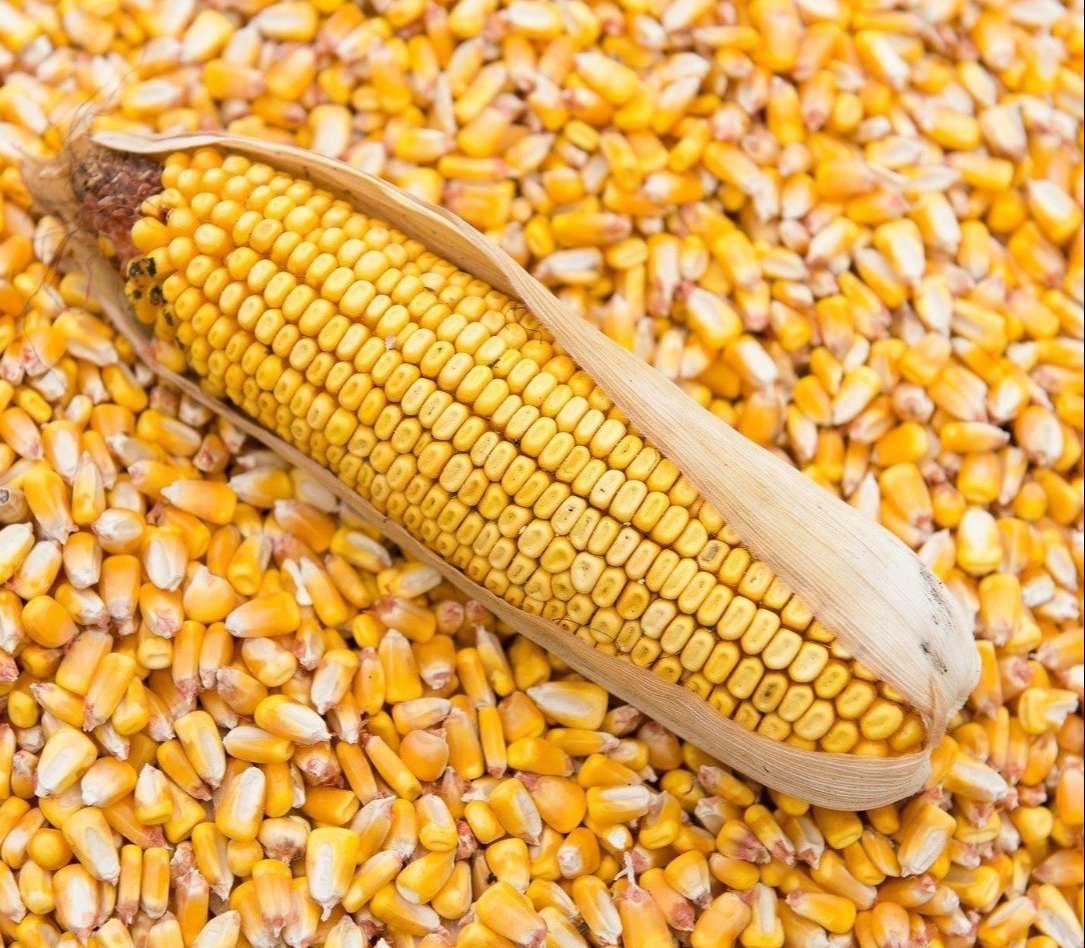 Employing factor analytic tools for selecting high‐performance and stable tropical maize hybridsSaulo Chaves, Jeniffer S. P. C. Evangelista, Roberto S. Trindade, Luiz A. S. Dias, Paulo E. Guimarães, Lauro J. M. Guimarães, Rodrigo S. Alves, Leonardo L. Bhering, and Kaio O. G. DiasCrop Science, Dec 2023
Employing factor analytic tools for selecting high‐performance and stable tropical maize hybridsSaulo Chaves, Jeniffer S. P. C. Evangelista, Roberto S. Trindade, Luiz A. S. Dias, Paulo E. Guimarães, Lauro J. M. Guimarães, Rodrigo S. Alves, Leonardo L. Bhering, and Kaio O. G. DiasCrop Science, Dec 2023Genotype-by-environment interaction (GEI) is a major concern in tropical maize breeding. Here, we used factor analytic mixed models (FAMM) to study GEI in a tropical maize dataset. Our goal was to select high-performance and stable hybrids using factor analytic selection tools (FAST) derived from FAMM outputs. Because the dataset comprised two different planting seasons, we also investigated differences in the genetic gains between seasonal and general selection (i.e., for both seasons simultaneously). The trials were installed in a lattice design with 36 hybrids containing two replicates and blocks with six plants each. We evaluated 53 hybrids and seven checks in 48 environments, represented by a combination of locations, years and seasons. We fitted the FAMMs with distinct sets of factors. The best-fitted FAMM was selected considering a parsimony-explained variance balance. Using the best FAMM for both seasonal and general analyses, we estimated the following selection tools: overall performance (OP); root mean square deviation (RMSD), which represents general stability; and responsiveness , which represents specific stability. We selected hybrids based on an index built with OP and RMSD. Five and three hybrids were selected considering both general and seasonal analyses for the first and second season, respectively. Two hybrids were amongst the top eight for both seasonal analyses (i.e., only first season and only second season simultaenously). Higher genetic gains may be obtained by employing FAMM and using FAST in each season rather than analysing both seasons in a joint fashion.
@article{chaves_employing_2023, title = {Employing factor analytic tools for selecting high‐performance and stable tropical maize hybrids}, volume = {63}, copyright = {All rights reserved}, issn = {0011-183X, 1435-0653}, url = {https://onlinelibrary.wiley.com/doi/10.1002/csc2.20911}, doi = {10.1002/csc2.20911}, language = {en}, number = {3}, urldate = {2023-03-02}, journal = {Crop Science}, author = {Chaves, Saulo and Evangelista, Jeniffer S. P. C. and Trindade, Roberto S. and Dias, Luiz A. S. and Guimarães, Paulo E. and Guimarães, Lauro J. M. and Alves, Rodrigo S. and Bhering, Leonardo L. and Dias, Kaio O. G.}, year = {2023}, pages = {1114--1125}, dimensions = {true} } - Analysis of repeated measures data through mixed models: An application in Theobroma grandiflorum breedingSaulo Chaves, Rodrigo S. Alves, Luiz A. S. Dias, Rafael M. Alves, Kaio O. G. Dias, and Jeniffer S. P. C. EvangelistaCrop Science, Dec 2023
Theobroma grandiflorum is a perennial fruit tree native to the Amazon region. As a perennial species with continuous production throughout the years, breeders should seek well-conducted trials, accurate phenotyping and adequate statistical models for genetic evaluation and selection that can leverage the information provided by the repeated measures. We evaluated 13 models with different covariance structures for genetic and residual effects for T. grandiflorum evaluation, using an unbalanced dataset with 34 hybrids from the triple-crossing of nine parents, planted in a randomized complete block design. For nine consecutive years, the fruit yield of these hybrids was evaluated. Each model had its goodness-of-fit tested by the Akaike information criterion. The most adequate model for estimating the variance components and the breeding values were modelled with the first-order heterogeneous autoregressive for residual effects and third-order factor analytic for genetic effects. From this model, we used the factor analytic selection tools for selecting the top 10 families, providing a genetic gain of 10.42%. These results are important not only for T. grandiflorum breeding but also to show that in any repeated measures’ data from fruit-bearing perennial species the modelling of genetic and residual effects should not be neglected.
@article{chaves_analysis_2023, title = {Analysis of repeated measures data through mixed models: {An} application in {{Theobroma} grandiflorum} breeding}, volume = {63}, issn = {0011-183X, 1435-0653}, shorttitle = {Analysis of repeated measures data through mixed models}, doi = {10.1002/csc2.20995}, language = {en}, number = {4}, journal = {Crop Science}, author = {Chaves, Saulo and Alves, Rodrigo S. and Dias, Luiz A. S. and Alves, Rafael M. and Dias, Kaio O. G. and Evangelista, Jeniffer S. P. C.}, year = {2023}, pages = {2131--2144}, dimensions = {true}, } -
 A novel strategy to predict clonal composites by jointly modeling spatial variation and genetic competitionFilipe M. Ferreira, Saulo Chaves, Leonardo L. Bhering, Rodrigo S. Alves, Elizabete K. Takahashi, João E. Sousa, Marcos D. V. Resende, Fernando P. Leite, Salvador A. Gezan, José M. S. Viana, Samuel B. Fernandes, and Kaio O. G. DiasForest Ecology and Management, Nov 2023
A novel strategy to predict clonal composites by jointly modeling spatial variation and genetic competitionFilipe M. Ferreira, Saulo Chaves, Leonardo L. Bhering, Rodrigo S. Alves, Elizabete K. Takahashi, João E. Sousa, Marcos D. V. Resende, Fernando P. Leite, Salvador A. Gezan, José M. S. Viana, Samuel B. Fernandes, and Kaio O. G. DiasForest Ecology and Management, Nov 2023Biotic and abiotic stresses have been making it difficult to maintain the rates of genetic gains in forest tree breeding. Planting a mixture of genotypes or clonal composites can be an alternative to increase the security of forest plantations. The formation of clonal composites is complex due to inter-genotypic competition and indirect genotypic effects that can affect the efficiency of genetic selection. This study aims to understand how indirect genotypic effects can impact the response to selection and how the stand composition can be used to explore these effects and enhance forest yield. We used two clonal trials of eucalyptus hybrids implanted in a randomized complete block design with 24 replications, containing a single tree per plot evaluated for mean annual increment at 3 and 6 years. We focused on partitioning the genotypic variation into direct and indirect genotypic effects based on competition intensity factors. We identified aggressive, homeostatic, and sensitive clones based on the magnitude of indirect genotypic effects. Considering indirect genotypic effects, for mean annual increment, the total heritability decreased from 0.25 to 0.10 for 3 years and from 0.30 to 0.14 for 6 years, respectively. We proposed a workflow that uses the direct and indirect genotypic effects to predict the mean values for clonal composite combinations and to select the one with the highest yield. Our methodology considered spatial variation and interplot competition that can affect the total heritable estimates and response to selection in forest trials. The clones were classified as aggressive, homeostatic, and sensitive, according to their deviation from the indirect genotypic effects means. Our methodology enabled the extraction of useful information and predict many clonal composites’ performance, which can be used in recommending genotypes to be planted in mixtures.
@article{ferreira_novel_2023, title = {A novel strategy to predict clonal composites by jointly modeling spatial variation and genetic competition}, volume = {548}, copyright = {All rights reserved}, issn = {0378-1127}, url = {https://www.sciencedirect.com/science/article/pii/S0378112723006278}, doi = {10.1016/j.foreco.2023.121393}, urldate = {2023-09-12}, journal = {Forest Ecology and Management}, author = {Ferreira, Filipe M. and Chaves, Saulo and Bhering, Leonardo L. and Alves, Rodrigo S. and Takahashi, Elizabete K. and Sousa, João E. and Resende, Marcos D. V. and Leite, Fernando P. and Gezan, Salvador A. and Viana, José M. S. and Fernandes, Samuel B. and Dias, Kaio O. G.}, month = nov, year = {2023}, keywords = {Quantitative genetics, Linear mixed models, Competition, Associative effects, Eucalyptus breeding}, pages = {121393}, dimensions = {true} } -
 Multi-trait multi-environment models for selecting high-performance and stable eucalyptus clonesFilipe Manoel Ferreira, Saulo Chaves, Marco Antônio Peixoto, Rodrigo Silva Alves, Igor Ferreira Coelho, Marcos Deon Vilela Resende, Gleison Augustos Santos, and Leonardo Lopes BheringActa Scientiarum. Agronomy, Aug 2023
Multi-trait multi-environment models for selecting high-performance and stable eucalyptus clonesFilipe Manoel Ferreira, Saulo Chaves, Marco Antônio Peixoto, Rodrigo Silva Alves, Igor Ferreira Coelho, Marcos Deon Vilela Resende, Gleison Augustos Santos, and Leonardo Lopes BheringActa Scientiarum. Agronomy, Aug 2023Resumo Multi-trait multi-environment (MTME) models were fitted to eucalyptus breeding trials data to assess residual variance structure, genetic stability and adaptability. To do so, 215 eucalyptus clones were evaluated in a randomized complete block design with 30 replicates and one plant per plot in four environments. At 36 months of age, tree diameter at breast height (DBH) and pilodyn penetration (PP) were measured. Two MTME models were fitted, for which residuals were considered homoscedastic and heteroscedastic, with the best MTME model selected using Bayesian information criterion. The harmonic mean of the relative performance of the genotypic values (HMRPGV) was used to determine stability and adaptability. Of the two models, the heteroscedastic MTME model had better fit and provided greater accuracy. In addition, genotype-by-environment interaction was complex, and there was low genetic correlation between DBH and PP. Rank correlation between the clones selected by the MTME models was high for DBH but low for PP. The HMRPGV facilitated clone selection through simultaneous evaluation of stability, adaptability, and productivity. Thus, our results suggest that heteroscedastic MTME model / HMRPGV can be efficiently applied in the genetic evaluation and selection of eucalyptus clones.
@article{ferreira_multi-trait_2023, title = {Multi-trait multi-environment models for selecting high-performance and stable eucalyptus clones}, volume = {45}, issn = {1807-8621}, url = {https://periodicos.uem.br/ojs/index.php/ActaSciAgron/article/view/61626}, doi = {10.4025/actasciagron.v45i1.61626}, language = {pt}, urldate = {2023-12-04}, journal = {Acta Scientiarum. Agronomy}, author = {Ferreira, Filipe Manoel and Chaves, Saulo and Peixoto, Marco Antônio and Alves, Rodrigo Silva and Coelho, Igor Ferreira and Resende, Marcos Deon Vilela and Santos, Gleison Augustos and Bhering, Leonardo Lopes}, month = aug, year = {2023}, keywords = {quantitative genetics, tree breeding, genetic selection, genotype-by-environment interaction, eucalyptus breeding., multivariate analysis}, pages = {e61626--e61626}, dimensions = {true} } -
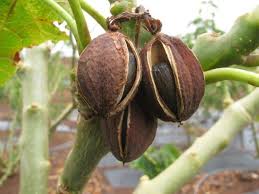 Modeling covariance structures and optimizing Jatropha curcas breedingJeniffer Santana Pinto Coelho Evangelista, Marco Antônio Peixoto, Igor Ferreira Coelho, Filipe Manoel Ferreira, Tiago Souza Marçal, Rodrigo Silva Alves, Saulo Chaves, Erina Vitório Rodrigues, Bruno Gâlveas Laviola, Marcos Deon Vilela Resende, Kaio Olimpio Graças Dias, and Leonardo Lopes BheringTree Genetics & Genomes, Mar 2023
Modeling covariance structures and optimizing Jatropha curcas breedingJeniffer Santana Pinto Coelho Evangelista, Marco Antônio Peixoto, Igor Ferreira Coelho, Filipe Manoel Ferreira, Tiago Souza Marçal, Rodrigo Silva Alves, Saulo Chaves, Erina Vitório Rodrigues, Bruno Gâlveas Laviola, Marcos Deon Vilela Resende, Kaio Olimpio Graças Dias, and Leonardo Lopes BheringTree Genetics & Genomes, Mar 2023Jatropha curcas has become a prominent source of biofuel, especially because of the high oil content in its fruit. The aim of this study was to test different statistic models and compare the best-fitted model with the compound symmetry model and study the grain yield persistence of J. curcas progenies. A total of 730 individuals from 73 half-sib families were evaluated for the fruit yield trait over six crop years. Repeated measures models with different covariance structures for the genetic and non-genetic effects were tested. Results show an increase up to in accuracy upon modeling the genetic and non-genetic effects when compared to the compound symmetry model. The selection gain obtained via the best-fit model for 10, 15, 20, and 25 selected best progenies was around 3 to 2% higher than gain obtained via the standard statistical model used by breeders (compound symmetry model). The harvests evaluated exhibited accuracies of high magnitude. The ten progenies that stood out with the best genetic performance are also those with the greatest persistence and greatest accumulated yield. Combining modeling of covariance structures for grain yield and selecting for persistence of production can sustain a successful long-term J. curcas breeding program.
@article{evangelista_modeling_2023, title = {Modeling covariance structures and optimizing {{Jatropha} curcas} breeding}, volume = {19}, doi = {10.1007/s11295-023-01596-9}, language = {en}, number = {2}, urldate = {2024-01-17}, journal = {Tree Genetics \& Genomes}, author = {Evangelista, Jeniffer Santana Pinto Coelho and Peixoto, Marco Antônio and Coelho, Igor Ferreira and Ferreira, Filipe Manoel and Marçal, Tiago Souza and Alves, Rodrigo Silva and Chaves, Saulo and Rodrigues, Erina Vitório and Laviola, Bruno Gâlveas and Resende, Marcos Deon Vilela and Dias, Kaio Olimpio Graças and Bhering, Leonardo Lopes}, month = mar, year = {2023}, keywords = {Genetic selection, Residual maximum likelihood, Best linear unbiased prediction, Renewable energy, Repeated measurements}, pages = {21}, dimensions = {true} } - Early selection in Theobroma grandiflorum, aiming at tolerance to hypoxiaJardel Diego Barbosa Rodrigues, Rafael Moysés Alves, and Saulo ChavesRevista Brasileira de Fruticultura, Mar 2023
Cupuassu (Theobroma grandiflorum)-based agroforestry system (AFS) can be used for restoration of vegetation around springs and riparian forests of water sources (rivers, streams, lakes etc.), subject to constant flooding. The objectives of this work were to study the relations between morphophysiological traits when flooding occurs, determining the most important to assess genotypes’ tolerance, and evaluate the ability of cupuassu genotypes to express alternative phenotypes and grow efficiently, in order to select materials capable of sustaining hypoxic conditions. The trial was carried out in a greenhouse, in a completely randomized design with a 16 x 2 (16 progenies and two water regimes) factorial scheme and four replications. Treatments started six months after the seedlings were transplanted. 15 traits related to vegetative development, biomass accumulation and physiology were measured for the experimental evaluation. Correlations and principal components were estimated to study the traits’ interrelationships and identify the most important to assist progeny selection. The results revealed that, among the evaluated traits, ten were sufficient to explain the variability within the population and four were elected as the most relevant to select the best progenies. 75% of the genotypes showed tolerance to partial flooding and based on performance and plasticity, we selected G174, G48 and G56 for a broader spectrum and G44, G47 and G51 for hypoxic conditions only. The promising evidence pointed out here will need to be corroborated with field tests, so that the cupuassu tree can be recommended in the recovery of environments subject to hypoxia.
@article{rodrigues_early_2023, title = {Early selection in {{Theobroma} grandiflorum}, aiming at tolerance to hypoxia}, volume = {45}, copyright = {All rights reserved}, issn = {1806-9967, 0100-2945}, url = {http://www.scielo.br/scielo.php?script=sci_arttext&pid=S0100-29452023000100103&tlng=en}, doi = {10.1590/0100-29452023948}, language = {en}, urldate = {2024-02-02}, journal = {Revista Brasileira de Fruticultura}, author = {Rodrigues, Jardel Diego Barbosa and Alves, Rafael Moysés and Chaves, Saulo}, year = {2023}, pages = {e--948}, dimensions = {true} } -
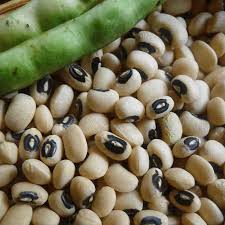 Modeling covariance structures for genetic and non-genetic effects in cowpea multi-environment trialsMaurício dos Santos Araújo, Saulo Chaves, Kaesel Jackson Damasceno-Silva, Luiz Antônio dos Santos Dias, and Maurisrael de Moura RochaAgronomy Journal, Mar 2023
Modeling covariance structures for genetic and non-genetic effects in cowpea multi-environment trialsMaurício dos Santos Araújo, Saulo Chaves, Kaesel Jackson Damasceno-Silva, Luiz Antônio dos Santos Dias, and Maurisrael de Moura RochaAgronomy Journal, Mar 2023In cowpea breeding, multi-environment trials are conducted to select lines with high yield. The occurrence of genetic and/or statistical imbalance is common in these experiments, in addition to the possibility of (co)variance between genetic and non-genetic effects. We explore the restricted maximum likelihood/best linear unbiased prediction features to select the model with the most appropriated covariance structure and compare the results with the traditional model (homogenous variances and no covariances). Then, 17 inbred lines and three cultivars were evaluated in six experiments during two crop years in the semiarid zone of Northeast Brazil. The trait evaluated was the 100-grain weight. We selected the best model considering the Akaike Information Criterion. The model with diagonal structure for the residual effects and heterogeneous compound symmetry for the genetic effects had the best fit. The predicted genetic gain of lines selected in this model was 1.18% higher compared to the traditional model. Modeling different (co)variance structures for genetic and non-genetic effects is an efficient approach in selecting superior genotypes in multi-environment trials in cowpea breeding.
@article{araujo_modeling_2023, title = {Modeling covariance structures for genetic and non-genetic effects in cowpea multi-environment trials}, volume = {115}, copyright = {All rights reserved}, issn = {1435-0645}, url = {https://onlinelibrary.wiley.com/doi/abs/10.1002/agj2.21321}, doi = {10.1002/agj2.21321}, language = {en}, number = {3}, urldate = {2024-06-16}, journal = {Agronomy Journal}, author = {Araújo, Maurício dos Santos and Chaves, Saulo and Damasceno-Silva, Kaesel Jackson and Dias, Luiz Antônio dos Santos and de Rocha, Maurisrael de Moura}, year = {2023}, pages = {1248--1256}, dimensions = {true} }
2022
-
 Are stomatal area and stomatal density reliable traits for identification of doubled haploids in maize?Mariana Rodrigues Ribeiro, Roberto Santos Trindade, Isabel Regina Prazeres Souza, Andréa Almeida Carneiro, Tácila Cristina Azevedo, Lauro José Moreira Guimarães, Saulo Chaves, and Luiz Antônio Santos DiasCrop Breeding and Applied Biotechnology, Mar 2022
Are stomatal area and stomatal density reliable traits for identification of doubled haploids in maize?Mariana Rodrigues Ribeiro, Roberto Santos Trindade, Isabel Regina Prazeres Souza, Andréa Almeida Carneiro, Tácila Cristina Azevedo, Lauro José Moreira Guimarães, Saulo Chaves, and Luiz Antônio Santos DiasCrop Breeding and Applied Biotechnology, Mar 2022@article{ribeiro_are_2022, title = {Are stomatal area and stomatal density reliable traits for identification of doubled haploids in maize?}, volume = {22}, copyright = {All rights reserved}, doi = {10.1590/1984-70332022v22n2a16}, number = {2}, journal = {Crop Breeding and Applied Biotechnology}, author = {Ribeiro, Mariana Rodrigues and Trindade, Roberto Santos and Souza, Isabel Regina Prazeres and Carneiro, Andréa Almeida and Azevedo, Tácila Cristina and Guimarães, Lauro José Moreira and Chaves, Saulo and Dias, Luiz Antônio Santos}, year = {2022}, pages = {e42222226}, dimensions = {true} } -
 Multivariate Bayesian analysis for genetic evaluation and selection of Eucalyptus in multiple environment trialsFilipe Manoel Ferreira, Jeniffer Santana Pinto Coelho Evangelista, Saulo Chaves, Rodrigo Silva Alves, Dandára Bonfim Silva, Renan Garcia Malikouski, Marcos Deon Vilela Resende, Leonardo Lopes Bhering, and Gleison Augusto SantosBragantia, Jun 2022
Multivariate Bayesian analysis for genetic evaluation and selection of Eucalyptus in multiple environment trialsFilipe Manoel Ferreira, Jeniffer Santana Pinto Coelho Evangelista, Saulo Chaves, Rodrigo Silva Alves, Dandára Bonfim Silva, Renan Garcia Malikouski, Marcos Deon Vilela Resende, Leonardo Lopes Bhering, and Gleison Augusto SantosBragantia, Jun 2022Forest plantations are strong allies in preserving natural resources, providing social and economic benefits. The plantations carried out in the coming years will be vital to meet the growing demand for forest products. To ensure the continuity of genetic progress and the good results achieved with the improvement of forest species, statistical methods that accurately selects superior genotypes are desirable. Multi-trait multi-environment trials are preferred over single-trait single-environment trials, since they can exploit the covariance between traits and environments, increasing the analysis’s prediction power. The Bayesian multi-trait multi-environments approach (BMTME) combines the cited advantages with the parsimony of Bayesian statistics promoting a more informative data analysis. Thus, the aims of this study were to estimate genetic parameters, evaluate genetic variability, and select eucalyptus clones through BMTME models. To this end, a data set with 215 eucalyptus clones evaluated in four environments for diameter at breast height and Pilodyn penetration was used. The Markov Chain Monte Carlo algorithm was applied to estimate the variance components and genetic parameters and to predict the genotypic values. The Smith-Hazel index was used to simultaneously achieve gains with selection for both traits. The BMTME approach provided high accuracies, being a good strategy to the evaluation of multiple environmental trials of Eucalyptus for breeding purposes.
@article{ferreira_multivariate_2022, title = {Multivariate {Bayesian} analysis for genetic evaluation and selection of {Eucalyptus} in multiple environment trials}, volume = {81}, copyright = {All rights reserved}, issn = {0006-8705, 1678-4499}, url = {http://www.scielo.br/j/brag/a/jJkrDVLTjWg65JCPrVtp6Xn/abstract/?lang=en}, doi = {10.1590/1678-4499.20210347}, language = {en}, urldate = {2022-08-24}, journal = {Bragantia}, author = {Ferreira, Filipe Manoel and Evangelista, Jeniffer Santana Pinto Coelho and Chaves, Saulo and Alves, Rodrigo Silva and Silva, Dandára Bonfim and Malikouski, Renan Garcia and Resende, Marcos Deon Vilela and Bhering, Leonardo Lopes and Santos, Gleison Augusto}, month = jun, year = {2022}, keywords = {quantitative genetics, multi-environment trials, Eucalyptus spp., forest tree breeding, genotype × environment interaction}, dimensions = {true} } - Selection of Theobroma grandiflorum clones adapted to agroforestry systems using an additive indexRafael Moysés Alves and Saulo ChavesActa Scientiarum. Agronomy, Jun 2022
Resumo In fruit tree breeding, selection indices are used to identify the genotypes that combine desirable commercial and non-commercial characteristics. As Theobroma grandiflorum is generally cultivated in agroforestry systems (AFS), there is a need to develop cultivars that are adapted to such environments. In this study, the objective was to select the most promising genotypes for their future use in AFS based on the additive index, a pioneering method for this crop. The trial was carried out for 12 years in an agroforestry system in the municipality of Tomé-Açu, Pará State, Brazil. The 16 evaluated clones were completely randomised with a variable number of repetitions. The average number of fruits produced as well as the morpho-agronomic characteristics of the fruits were analysed. Mixed linear models were used to estimate the components of variance and predict the genotypic values. The genetic correlation between the variables was estimated, and the selection of genotypes was based on the additive index, with a positive orientation of all variables except the thickness of the fruit shells and the weight of the fruits. Clones 42, 44, 46, 47, 57, 61, and 64 performed well for all the analysed variables, resulting in a selection gain of 7.3% and low incidence rates of witches’ broom disease. These genotypes can be made available to producers in the form of clones for use in AFS and can further be included in future hybridisations in T. grandiflorum breeding.
@article{alves_selection_2022, title = {Selection of {Theobroma grandiflorum} clones adapted to agroforestry systems using an additive index}, volume = {45}, issn = {1807-8621}, url = {https://periodicos.uem.br/ojs/index.php/ActaSciAgron/article/view/57519}, doi = {10.4025/actasciagron.v45i1.57519}, language = {pt}, number = {1}, urldate = {2022-11-26}, journal = {Acta Scientiarum. Agronomy}, author = {Alves, Rafael Moysés and Chaves, Saulo}, year = {2022}, keywords = {fruit tree breeding, genetic parameters, Moniliophthora perniciosa., selection index}, pages = {e57519}, dimensions = {true} } - Selection of cupuassu tree clones for fruit qualityMarlene Evangelista Vieira, Rafael Moysés Alves, Marta Simone Mendonça Freitas, Ismael Jesus Matos Viégas, Saulo Chaves, Diego Alves Peçanha, and Marcelo VivasRevista Brasileira de Ciências Agrárias, May 2022
This study aimed to evaluate the potential of cupuassu tree genotypes based on the physical characterization of the fruit and the physical-chemical properties of the pulp. We used cupuassu tree clones from a field trial installed in the municipality of Tomé Açu, Pará, Brazil. The data obtained from the characterization were submitted to univariate and multivariate analysis of variance by the methods of principal components, correlation networks and established the divergence between the genotypes. The results showed that clone 46 had the highest seed and pulp masses, as well as fruits that excelled in average length, when compared to clones 32 and 61. Regarding vitamin C contents, clones 46, 61, 63 were superior compared to the other genotypes studied. These same clones, along with the 32 presented values higher than the quality reference standard proposed by the legislation in force. Thus, the tested clones presented characteristics suitable both for the pulp market (46, 61 and 64) and for the cupulate industry (32, 42 and 46), with pulp quality indexes higher than those determined by the Brazilian legislation.
@article{vieira_selection_2022, title = {Selection of cupuassu tree clones for fruit quality}, volume = {17}, copyright = {Copyright (c) 2022}, issn = {1981-0997}, doi = {10.5039/agraria.v17i2a1948}, language = {pt}, number = {2}, urldate = {2022-05-30}, journal = {Revista Brasileira de Ciências Agrárias}, author = {Vieira, Marlene Evangelista and Alves, Rafael Moysés and Freitas, Marta Simone Mendonça and Viégas, Ismael Jesus Matos and Chaves, Saulo and Peçanha, Diego Alves and Vivas, Marcelo}, month = may, year = {2022}, keywords = {Theobroma grandiflorum}, pages = {1--9}, dimensions = {true} } - Leveraging multi-harvest data for increasing genetic gains per unit of time for fruit yield and resistance to witches’ broom in Theobroma grandiflorumSaulo Chaves, Luiz A. S. Dias, Rodrigo S. Alves, Rafael M. Alves, Jeniffer S. P. C. Evangelista, and Kaio O. G. DiasEuphytica, Nov 2022
Theobroma grandiflorum is a perennial fruit-bearing species with a long breeding cycle (~ 12 years). In multi-harvest data analyses, one frequently observes heteroscedasticity and genetic/statistical imbalance, which requires adequate statistical methods. This study aimed to (i) compare multi-harvest models with homogenous and heterogeneous residual variance, (ii) define the optimal number of harvests for an accurate genetic selection of T. grandiflorum genotypes, and (iii) select T. grandiflorum hybrid families with high fruit yield and resistance to witches’ broom using an additive index. We used a generalized linear mixed model to analyse the resistance to witches’ broom. The data refers to an unbalanced trial with 34 triple-cross hybrid families, arranged in a randomized complete block design. We evaluated these families throughout 9 consecutive harvest years regarding fruit yield and resistance to witches’ broom. The variance components, genetic parameters and genotypic values were estimated/predicted through residual maximum likelihood/best linear unbiased prediction methodologies. The model with heterogeneous residuals had a better fit than the homogeneous model for the fruit yield trait, according to Akaike information criterion. The results attest to the genetic variability in the evaluated population. To select the best individual for the next breeding cycle, three harvests are enough for selecting accurately for fruit yield and resistance to witches’ broom. For commercial release, nine harvests are necessary for both traits. We identified ten high-performance families regarding fruit yield and resistance to witches’ broom.
@article{chaves_leveraging_2022, title = {Leveraging multi-harvest data for increasing genetic gains per unit of time for fruit yield and resistance to witches’ broom in {{Theobroma} grandiflorum}}, volume = {218}, copyright = {All rights reserved}, issn = {1573-5060}, doi = {10.1007/s10681-022-03126-5}, language = {en}, number = {12}, urldate = {2022-11-11}, journal = {Euphytica}, author = {Chaves, Saulo and Dias, Luiz A. S. and Alves, Rodrigo S. and Alves, Rafael M. and Evangelista, Jeniffer S. P. C. and Dias, Kaio O. G.}, month = nov, year = {2022}, keywords = {Quantitative genetics, Mixed models, Repeated measures, Fruit tree breeding, Genotype-by-harvest interaction}, pages = {171}, dimensions = {true} } - Genomic designing for biotic stress resistant cocoa treeFredson Santos Menezes, Jonathan Javier Mucherino-Muñoz, Cláusio Antônio Ferreira, Saulo Chaves, Ceslaine Barbosa, Livia Santos Lima Lemos, Natalia Jordana, Mariana Carvalho, José Luis Pires, Raner José Santana Silva, Karina Peres Gramacho, Rafael Moysés Alves, Ronan Xavier Corrêa, and Fabienne MicheliIn Genomic Designing for Biotic Stress Resistant Technical Crops, Nov 2022
Cocoa tree (Theobroma cacao L.) is cultivated mainly in tropical regions and produces beans that are used for chocolate manufacture. Worldwide, cocoa bean production is threatened by biotic stresses, mainly fungus, oomycetes, virus and other pests. The understanding of the determinism of the plant-pathogen interactions as well as the different and integrated ways to manage the cocoa diseases at field level began the focus of several research groups. Here, we did an overview of the several cocoa diseases, of the traditional breeding methods as well as the molecular assisted ones recently developed, of the molecular and omics resources currently available, and of the new biotechnology approaches—including genome edition and nanotechnologies—that are used at basic and applied research levels. We also described the main germplasm and collections worldwide as well as the use of the cocoa diversity as main source of disease resistance.
@incollection{menezes_genomic_2022, address = {Cham}, title = {Genomic designing for biotic stress resistant cocoa tree}, copyright = {All rights reserved}, isbn = {978-3-031-09293-0}, url = {https://doi.org/10.1007/978-3-031-09293-0_2}, language = {en}, urldate = {2022-12-06}, booktitle = {Genomic {Designing} for {Biotic} {Stress} {Resistant} {Technical} {Crops}}, publisher = {Springer International Publishing}, author = {Menezes, Fredson Santos and Mucherino-Muñoz, Jonathan Javier and Ferreira, Cláusio Antônio and Chaves, Saulo and Barbosa, Ceslaine and Lemos, Livia Santos Lima and Jordana, Natalia and Carvalho, Mariana and Pires, José Luis and Silva, Raner José Santana and Gramacho, Karina Peres and Alves, Rafael Moysés and Corrêa, Ronan Xavier and Micheli, Fabienne}, editor = {Kole, Chittaranjan}, year = {2022}, doi = {10.1007/978-3-031-09293-0_2}, keywords = {Biotechnology, Cocoa genes and genomes, Diversity, Plant diseases, Traditional and assisted cocoa breeding}, pages = {49--113}, dimensions = {true} } - Application of linear mixed models for multiple harvest/site trial analyses in perennial plant breedingSaulo Chaves, Jeniffer S. P. C. Evangelista, Rodrigo S. Alves, Filipe M. Ferreira, Luiz A. S. Dias, Rafael M. Alves, Kaio O. G. Dias, and Leonardo L. BheringTree Genetics & Genomes, Dec 2022
The optimization of perennial plant breeding necessarily involves the evaluation of multi-harvest and/or multi-site trials. In these situations, modeling covariance structures can elevate accuracy. This study aimed to evaluate different covariance structures for multi-harvest and multi-site trial analyses, using two datasets (D1 and D2). In D1, 25 hybrids of Theobroma grandiflorum were evaluated in a complete randomized block design, during twelve consecutive harvest years. In D2, 215 clones of Eucalyptus spp. were evaluated in a complete randomized block design, in four sites. For both datasets, the covariance structures of the random effects were modeled, and their adequacy was tested by the Akaike and Bayesian information criteria. From the selected model, the variance components and genetic parameters were estimated. We also compared the expected genetic gains and the rankings of genotypes based on the genotypic values provided by the basic and the selected models. For D1, the third-order factor analytic model was the most suitable for genetic effects, while for D2, the unstructured model showed the best fit for such effects. The models provided a better insight into the variances dynamics over the harvest years/sites. The genetic gains were 3.52 percentage points higher in D1 and did not change in D2. Despite similar results, the standard model, modeled with covariance structures that assume homogeneity of co-variances, was not the most statistically appropriate model for D2 according to the information criteria. Therefore, the modeling of covariance structures can and should be used in the genetic evaluation of perennial plants.
@article{chaves_application_2022, title = {Application of linear mixed models for multiple harvest/site trial analyses in perennial plant breeding}, volume = {18}, copyright = {All rights reserved}, issn = {1614-2950}, doi = {10.1007/s11295-022-01576-5}, language = {en}, number = {6}, urldate = {2022-12-05}, journal = {Tree Genetics \& Genomes}, author = {Chaves, Saulo and Evangelista, Jeniffer S. P. C. and Alves, Rodrigo S. and Ferreira, Filipe M. and Dias, Luiz A. S. and Alves, Rafael M. and Dias, Kaio O. G. and Bhering, Leonardo L.}, month = dec, year = {2022}, keywords = {BLUP, Fruit tree breeding, Covariance structures, Factor analytic, Forest breeding, Genetic evaluation}, pages = {44}, dimensions = {true} } - Number of harvest years and selection for productivity, witches’ broom resistance, stability, and adaptability in cacaoSaulo Chaves, Luiz Antônio Santos Dias, Rodrigo Silva Alves, Rafael Moysés Alves, Andreza Rafaely Martins José, and Caio Márcio Vasconcellos Cordeiro AlmeidaAgronomy Journal, Nov 2022
A suitable statistical model for the analysis of repeated measures is a prerequisite for an accurate genetic selection of cacao (Theobroma cacao L.) genotypes. Thus, the objectives of this study were to (a) evaluate homoscedastic and heteroscedastic repeatability models, (b) estimate the optimal number of harvest years for genetic selection, and (c) identify and select biparental crosses with high productivity, witches’ broom (Moniliophthora perniciosa Stahel & Philips-Mora) resistance, stability, and adaptability. Twenty biparental crosses were evaluated in a complete randomized blocks design, with seven replications and 12 trees per plot for 10 harvest years. Evaluated traits were number of healthy fruits (NHF), number of symptomatic fruits for witches’ broom (NWBF), dry bean weight (DBW), and fruit index (FI). Variance components were estimated by restricted maximum likelihood, and genotypic values were predicted by best linear unbiased prediction. The best-fitted repeatability model for each trait was indicated by Akaike’s information criterion. The additive index was used for simultaneous selection for productivity, witches’ broom resistance, stability, and adaptability. The heteroscedastic repeatability model showed the best fit for all traits. For HF, WBF, and FI, two and seven harvest years were sufficient for selection aiming at recombination and recommendation, respectively. For NWBF, evaluated only from the seventh year onwards, one harvest year was enough for recombination and three for recommendation. Five biparental crosses with high productivity, witches’ broom resistance, stability, and adaptability were selected for recombination and/or for competition trials for recommendation. Such results can help define efficient strategies and optimize cacao breeding programs.
@article{chaves_number_2022, title = {Number of harvest years and selection for productivity, witches’ broom resistance, stability, and adaptability in cacao}, volume = {114}, doi = {10.1002/agj2.21149}, number = {6}, urldate = {2023-01-05}, journal = {Agronomy Journal}, author = {Chaves, Saulo and Dias, Luiz Antônio Santos and Alves, Rodrigo Silva and Alves, Rafael Moysés and José, Andreza Rafaely Martins and Almeida, Caio Márcio Vasconcellos Cordeiro}, month = nov, year = {2022}, pages = {3234--3245}, dimensions = {true} }
2021
-
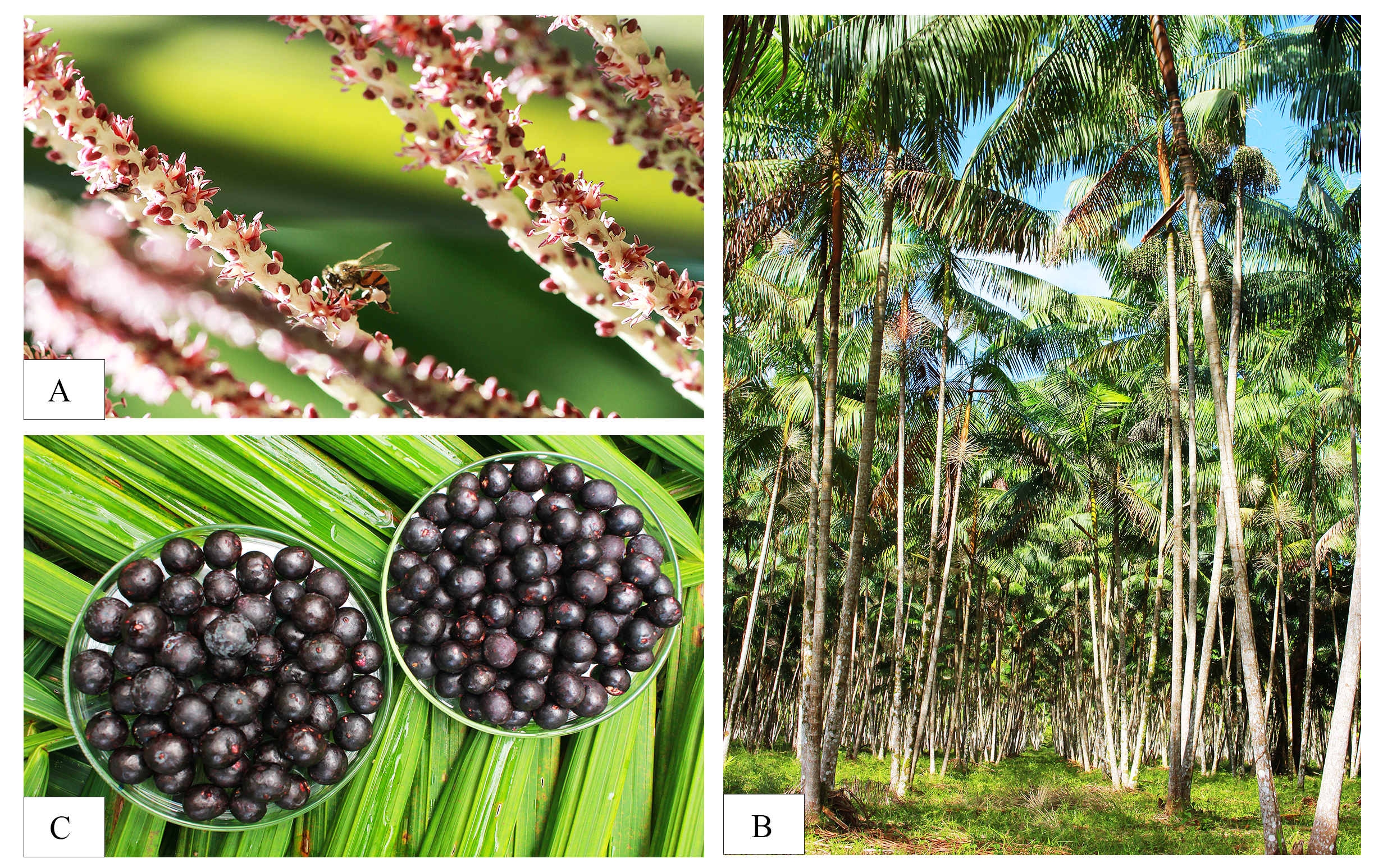 Contribution of breeding to agriculture in the Brazilian Amazon. I. Açaí palm and oil palmSaulo Chaves, Rafael Moysés Alves, and Luiz Antônio Santos DiasCrop Breeding and Applied Biotechnology, Nov 2021
Contribution of breeding to agriculture in the Brazilian Amazon. I. Açaí palm and oil palmSaulo Chaves, Rafael Moysés Alves, and Luiz Antônio Santos DiasCrop Breeding and Applied Biotechnology, Nov 2021@article{chaves_contribution_2021, title = {Contribution of breeding to agriculture in the {Brazilian} {Amazon}. {I}. {Açaí} palm and oil palm}, volume = {21}, copyright = {All rights reserved}, doi = {10.1590/1984-70332021v21Sa21}, number = {S}, journal = {Crop Breeding and Applied Biotechnology}, author = {Chaves, Saulo and Alves, Rafael Moysés and Dias, Luiz Antônio Santos}, year = {2021}, pages = {e386221S8}, dimensions = {true} } - Theobroma grandiflorum breeding optimization based on repeatability, stability and adaptability informationSaulo Chaves, Rafael Moysés Alves, Rodrigo Silva Alves, Alexandre Magno Sebbenn, Marcos Deon Vilela Resende, and Luiz Antônio Santos DiasEuphytica, Dec 2021
@article{chaves_theobroma_2021, title = {{Theobroma} grandiflorum breeding optimization based on repeatability, stability and adaptability information}, volume = {217}, copyright = {All rights reserved}, issn = {0014-2336, 1573-5060}, url = {https://link.springer.com/10.1007/s10681-021-02944-3}, doi = {10.1007/s10681-021-02944-3}, language = {en}, number = {12}, urldate = {2021-11-11}, journal = {Euphytica}, author = {Chaves, Saulo and Alves, Rafael Moysés and Alves, Rodrigo Silva and Sebbenn, Alexandre Magno and Resende, Marcos Deon Vilela and Dias, Luiz Antônio Santos}, month = dec, year = {2021}, pages = {211}, dimensions = {true} } - Cupuaçu tree genotype selection for an agroforestry system environment in the AmazonRafael Moysés Alves, Saulo Chaves, Rodrigo Silva Alves, Thalita Gomes Santos, Dênmora Gomes Araújo, and Marcos Deon Vilela ResendePesquisa Agropecuária Brasileira, Feb 2021
Abstract: The objective of this work was to select cupuaçu (Theobroma grandiflorum) tree progenies and individuals based on their agronomic traits, and, indirectly, to identify those adapted to an agroforestry system (AFS) environment in the Brazilian Amazon. For this purpose, 25 full-sib progenies were planted and tested in consortium with black pepper (Piper nigrum), banana (Musa spp.), and bacuri (Platonia insignis) trees. The experiment was carried out in a randomized complete block design, with five replicates and three plants per plot, from 2005 to 2019. For the statistical analyses, the phenotypic averages for production and incidence of witches’ broom disease, evaluated during 11 harvests, were used. Superior progenies and individuals were identified using the mixed model methodology (REML/BLUP), which led to the selection of ten plants from five families with superior agronomic traits. Cupuaçu tree progenies 6, 36, 37, 49, and 52 are the ones that best adapt to the environment of a multispecies AFS in the Amazon region because of their agronomic traits under competitive conditions. Ten matrices show agronomic potential and indirect adaptation to the AFS and can be used as clonal cupuaçu cultivars in this environment.
@article{alves_cupuacu_2021, title = {Cupuaçu tree genotype selection for an agroforestry system environment in the {Amazon}}, volume = {56}, copyright = {All rights reserved}, issn = {0100-204X, 0100-204X, 1678-3921}, doi = {10.1590/S1678-3921.pab2021.v56.02139}, language = {en}, urldate = {2021-08-05}, journal = {Pesquisa Agropecuária Brasileira}, author = {Alves, Rafael Moysés and Chaves, Saulo and Alves, Rodrigo Silva and Santos, Thalita Gomes and Araújo, Dênmora Gomes and Resende, Marcos Deon Vilela}, month = feb, year = {2021}, keywords = {Theobroma grandiflorum, REML/BLUP, fruit tree breeding, genetic selection}, pages = {e02139}, dimensions = {true} }
2020
- Canopy replacement used in the evaluation of cupuassu tree genotypes in the state of ParáRafael Moysés Alves, Saulo Chaves, Raimundo Parente Oliveira, Jack Loureiro Pedroza Neto, and Alexandre Magno SebbennRevista Brasileira de Fruticultura, Jul 2020
Abstract This study aimed to use the canopy replacement technique to reduce the field evaluation time and to select promising cupuassu tree clones. The study was carried out under field conditions using fifteen-year-old trees. The crowns were replaced using 16 treatments (clones). The experiment was conducted using randomized blocks design with 18 replicates and one plant per plot, during a period of ten years. The following variables were evaluated: average number of fruits, fruit, seed and pulp production (kg/plant) and symptoms of “witches broom” disease. The data were checked for normality followed by analysis of variance. The results highlighted clones 32, 42, 44, 46, 47, 61, 62, 63 and 64, presenting characteristics such as productivity, tolerance to witches’ broom disease and interesting fruit characteristics. The results demonstrate that the technique was effective in the evaluation of cupuassu tree genotypes, since the clones revealed their potential at early stages after establishment in the field. There was a reduction by at least 30% regarding the time needed to evaluate cupuassu tree genotypes. Five clones (32, 42, 46, 61 and 64) already present the potential to be made available to producers, aimed at replacing the canopy of unproductive trees.
@article{alves_canopy_2020, title = {Canopy replacement used in the evaluation of cupuassu tree genotypes in the state of {Pará}}, volume = {42}, copyright = {All rights reserved}, issn = {0100-2945, 0100-2945, 1806-9967}, url = {http://www.scielo.br/j/rbf/a/53Tsy43Lx7yXJZjJMrSDKqD/abstract/?lang=en}, doi = {10.1590/0100-29452020597}, language = {en}, number = {4}, urldate = {2021-08-05}, journal = {Revista Brasileira de Fruticultura}, author = {Alves, Rafael Moysés and Chaves, Saulo and Oliveira, Raimundo Parente and Pedroza Neto, Jack Loureiro and Sebbenn, Alexandre Magno}, month = jul, year = {2020}, keywords = {clone selection, genetic breeding, over grafting, Theobroma grandiflorum, witch broom}, pages = {e--597}, dimensions = {true} } - Simultaneous selection of cupuassu tree and Brazilian mahogany genotypes in an agroforestry system in Pará state, BrazilRafael Moysés Alves, Saulo Chaves, Marcos André Piedade Gama, Jack Loureiro Pedroza Neto, and Thalita Gomes SantosActa Amazonica, Sep 2020
This study aimed to evaluate and select progenies and matrices of cupuassu-tree siblings, and to select Brazilian mahogany matrices with superior characteristics to be used in agroforestry systems (AFS). Twenty-five full cupuassu tree sibling progenies and one Brazilian mahogany half-sibling progeny were evaluated. The study was conducted for 14 years in a commercial property in Tomé Açu, Pará State, Brazil. The number of fruits and fruit yield per plant, as well as the rate of plants with symptoms of witches’ broom disease, were used as response variables for cupuassu. For mahogany, the following response variables were used: total height, commercial height, crown height, diameter at breast height and commercial wood volume. There were five cupuassu tree progenies with interesting characteristics to be used in AFS. Based on the high values observed in the selection accuracy and heritabilities, a good potential for the selection of promising individuals in the cupuassu tree population is inferred. Based on the ranking of genotypic values and their agronomic performance, 10 matrices of cupuassu tree were selected. For Brazilian mahogany, three matrices showed excellent silvicultural performance. The matrices of these two species should be propagated vegetatively in order to evaluate clonal tests.
@article{alves_simultaneous_2020, title = {Simultaneous selection of cupuassu tree and {Brazilian} mahogany genotypes in an agroforestry system in {Pará} state, {Brazil}}, volume = {50}, copyright = {All rights reserved}, issn = {1809-4392, 0044-5967}, url = {http://www.scielo.br/scielo.php?script=sci_arttext&pid=S0044-59672020000300183&tlng=en}, doi = {10.1590/1809-4392202000711}, language = {en}, number = {3}, urldate = {2021-08-05}, journal = {Acta Amazonica}, author = {Alves, Rafael Moysés and Chaves, Saulo and Gama, Marcos André Piedade and Pedroza Neto, Jack Loureiro and Santos, Thalita Gomes}, month = sep, year = {2020}, pages = {183--191}, dimensions = {true} } - BRS Careca, BRS Fartura, BRS Duquesa, BRS Curinga, and BRS Golias: new cupuassu tree cultivarsRafael Moysés Alves and Saulo ChavesCrop Breeding and Applied Biotechnology, Sep 2020
The cultivars BRS Careca, BRS Fartura, BRS Duquesa, BRS Curinga, and BRS Golias of Theobroma grandiflorum are characterized by high levels of fruit production and diverse sources of resistance to witches’ broom disease. These cultivars are recommended for replacing the tree canopy of low yielding genotypes or forming new orchards.
@article{alves_brs_2020, title = {{BRS} {Careca}, {BRS} {Fartura}, {BRS} {Duquesa}, {BRS} {Curinga}, and {BRS} {Golias}: new cupuassu tree cultivars}, volume = {20}, copyright = {All rights reserved}, issn = {1984-7033, 1518-7853}, shorttitle = {{BRS} {Careca}, {BRS} {Fartura}, {BRS} {Duquesa}, {BRS} {Curinga}, and {BRS} {Golias}}, url = {http://www.scielo.br/scielo.php?script=sci_arttext&pid=S1984-70332020000400302&tlng=en}, doi = {10.1590/1984-70332020v20n4c66}, language = {en}, number = {4}, urldate = {2021-08-25}, journal = {Crop Breeding and Applied Biotechnology}, author = {Alves, Rafael Moysés and Chaves, Saulo}, year = {2020}, pages = {e342920413}, dimensions = {true} } - Evaluation of physicochemical attributes of a yellow latosol under agroforestry system as compared to secondary forest in the Eastern AmazonSaulo Chaves, Marcos André Piedade Gama, Rafael Moysés Alves, Raimundo Parente Oliveira, Jack Loureiro Pedroza Neto, and Vitória Malcher Nogueira LimaAgroforestry Systems, Oct 2020
In Brazil, the productive and sustainable use of Amazonian soils under agroforestry systems (AFS) has been considered a research challenge. This study aimed to evaluate the physicochemical attributes of a soil under AFS, comparing it with the soil under an adjacent secondary forest (SF). The study was carried out in an AFS area cultivated with passion fruit (Passiflora edulis), cupuaçu (Theobroma grandiflorum) and Brazilian mahogany (Swietenia macrophylla), between 2005 and 2019. Both study areas (AFS and SF) were divided into five blocks. Sampling was carried out in two soil depths (0–20 cm and 20–40 cm), which was subjected to chemical analysis to determine the pH in water, contents of macro- and micronutrients, exchangeable bases, exchangeable aluminum, base saturation, cation exchange capacity and organic matter contents. As for the physical attributes, penetration resistance (PR) up to 40 cm deep in the soil was evaluated, using 50 randomized measurement per study area. The contents of macronutrients were higher in AFS, and the content of organic matter was higher in SF. The contents of micronutrients did not follow a specific pattern, and presented a similar distribution in both environments. The PR was higher in SF, showing a linear behavior that increases with increasing depths, while in AFS, there was a stabilization tendency within soil depth. Soil fertility was better in AFS, mainly due to the residual contents of periodic fertilization, in addition to presenting better conditions for root establishment.
@article{chaves_evaluation_2020, title = {Evaluation of physicochemical attributes of a yellow latosol under agroforestry system as compared to secondary forest in the {Eastern} {Amazon}}, volume = {94}, copyright = {All rights reserved}, issn = {1572-9680}, doi = {10.1007/s10457-020-00513-6}, language = {en}, number = {5}, urldate = {2021-10-07}, journal = {Agroforestry Systems}, author = {Chaves, Saulo and Gama, Marcos André Piedade and Alves, Rafael Moysés and Oliveira, Raimundo Parente and Pedroza Neto, Jack Loureiro and Lima, Vitória Malcher Nogueira}, month = oct, year = {2020}, pages = {1903--1912}, dimensions = {true} }
